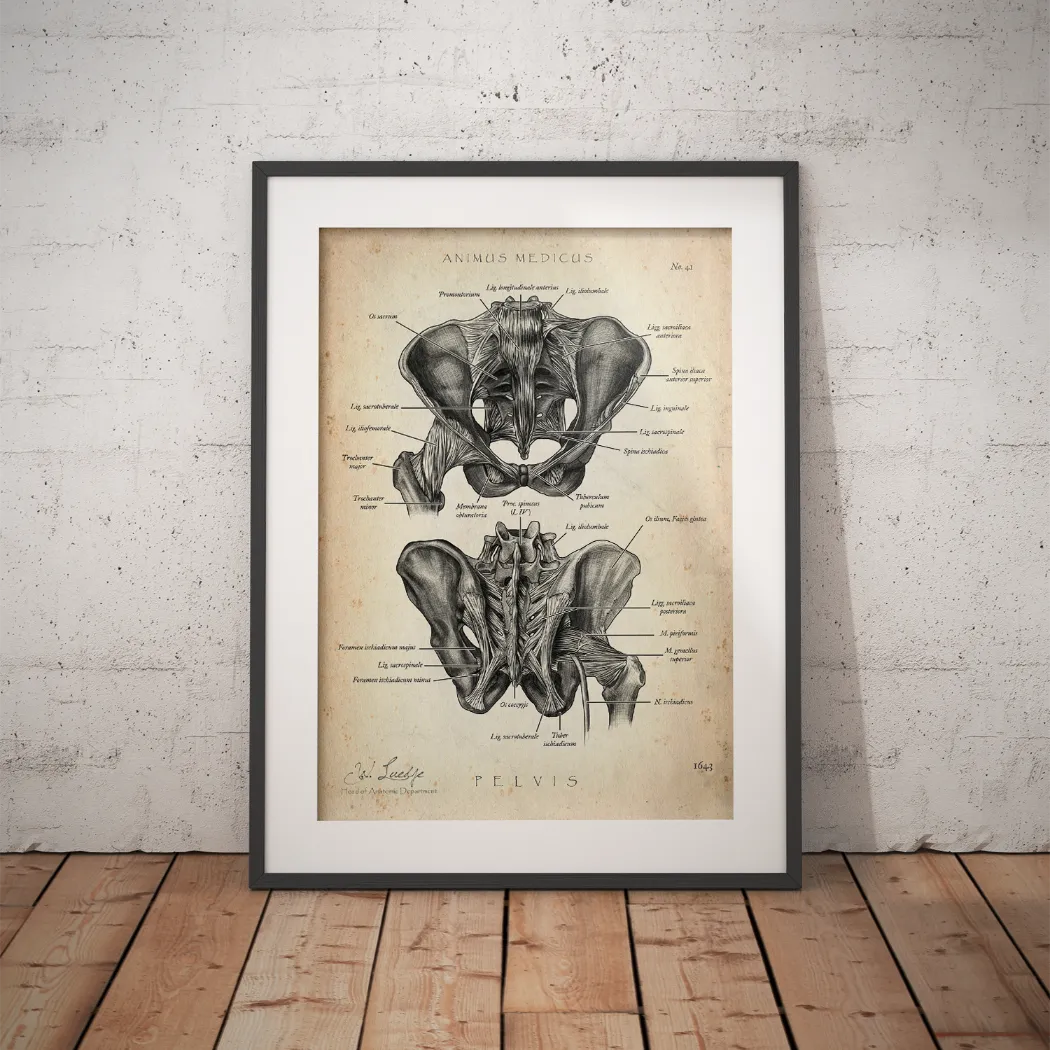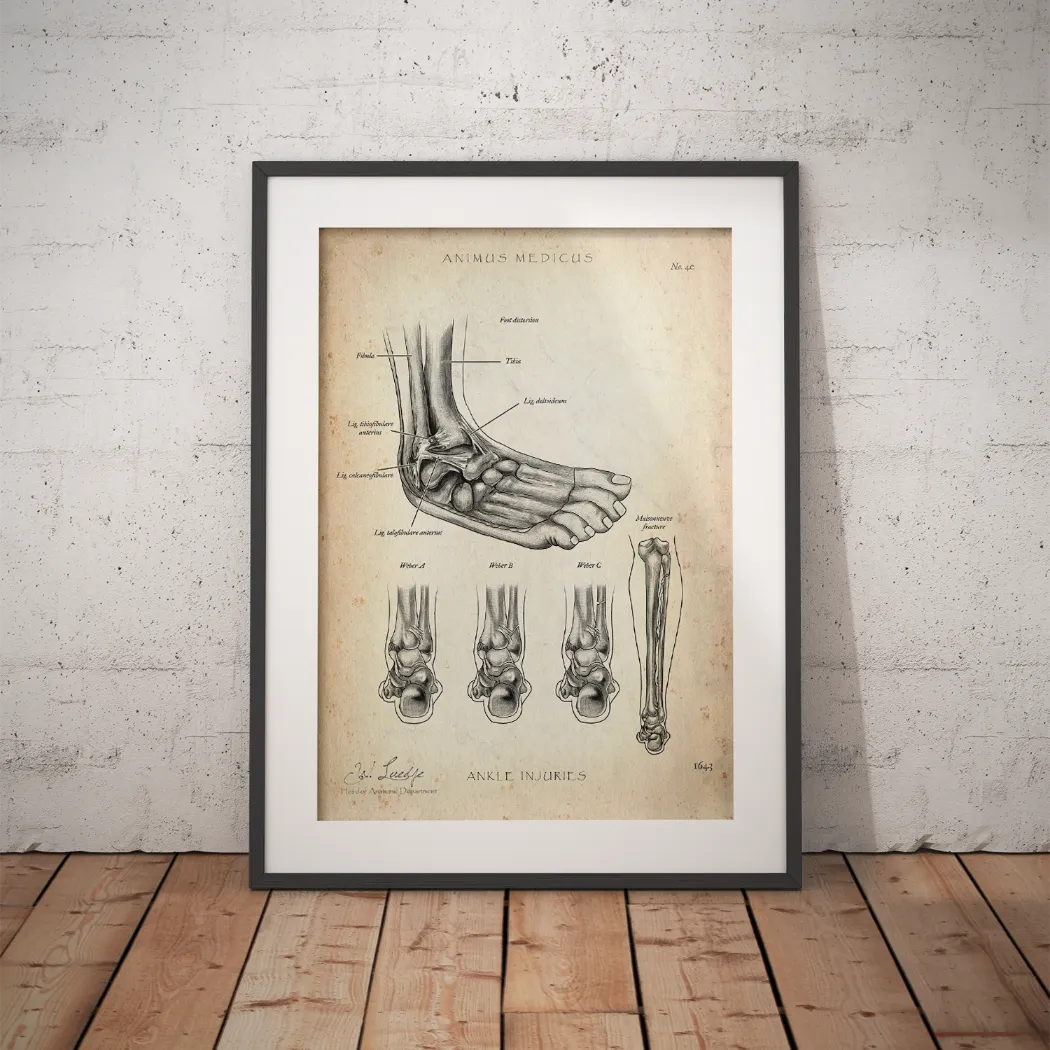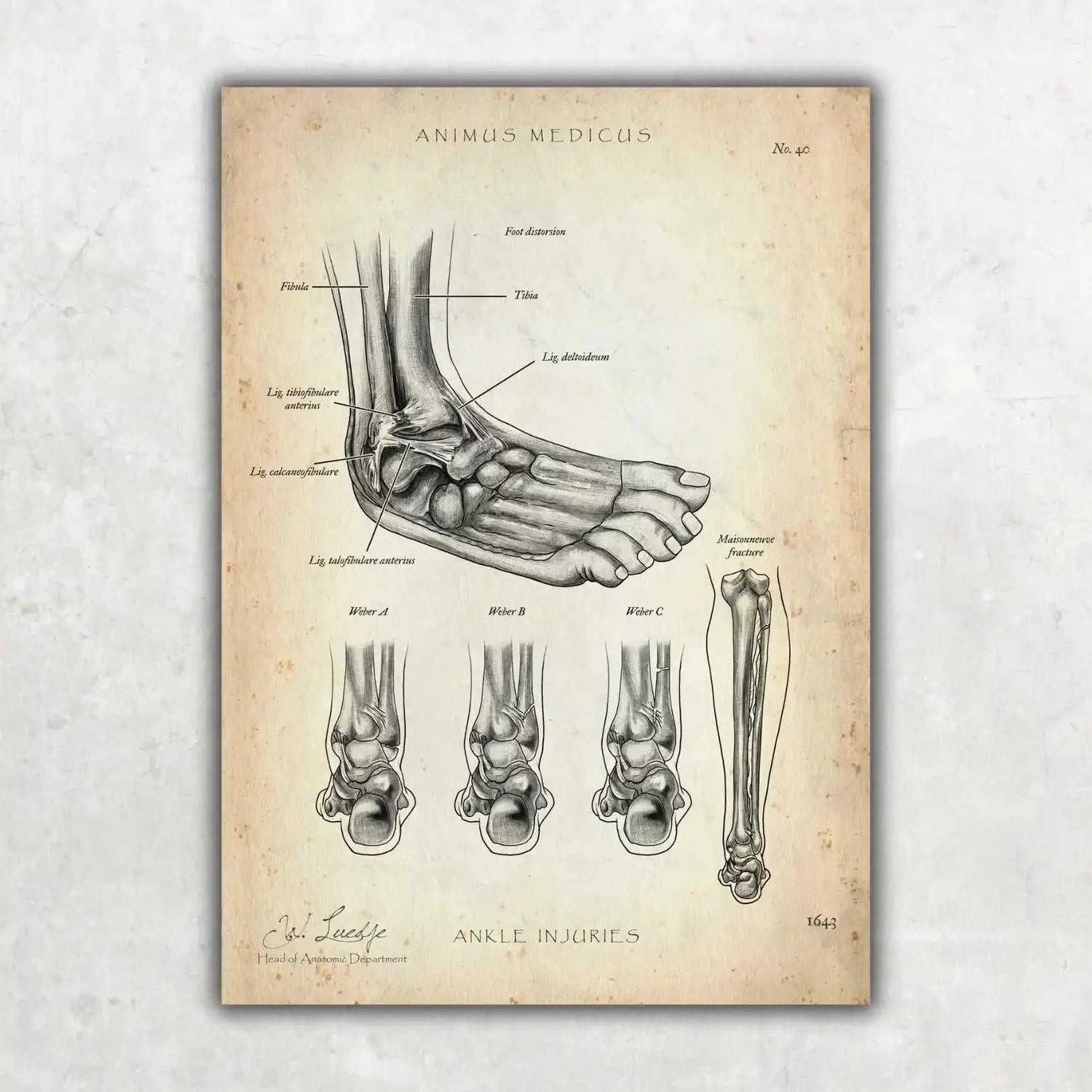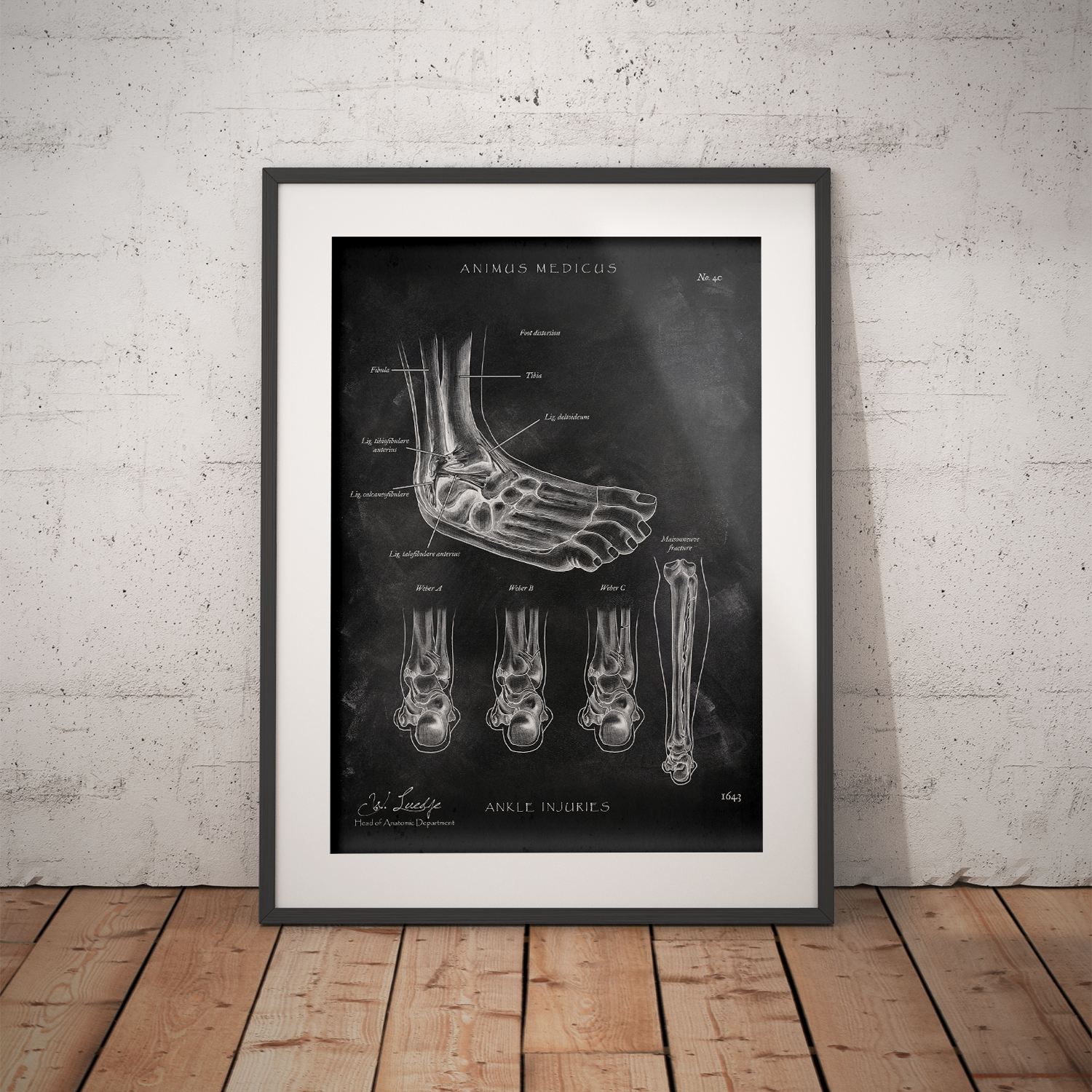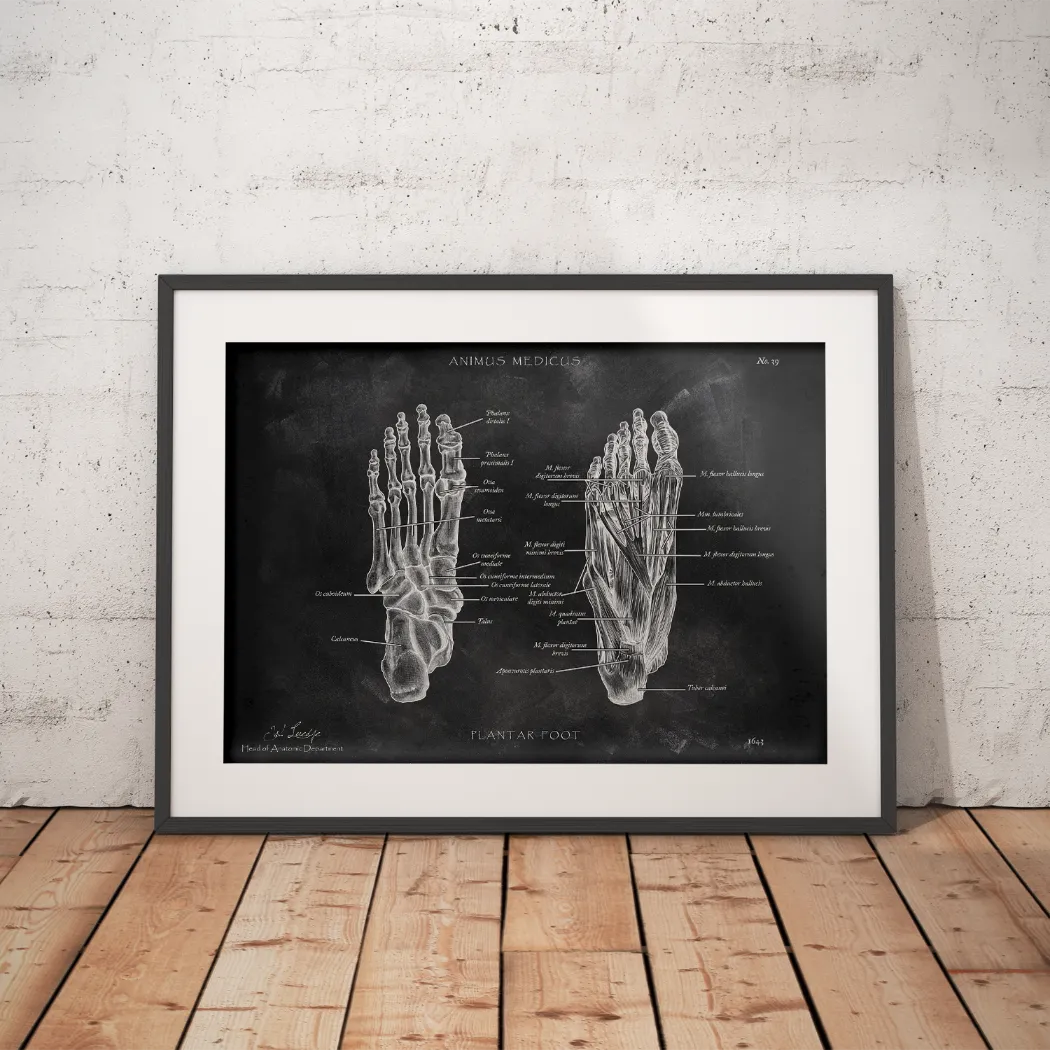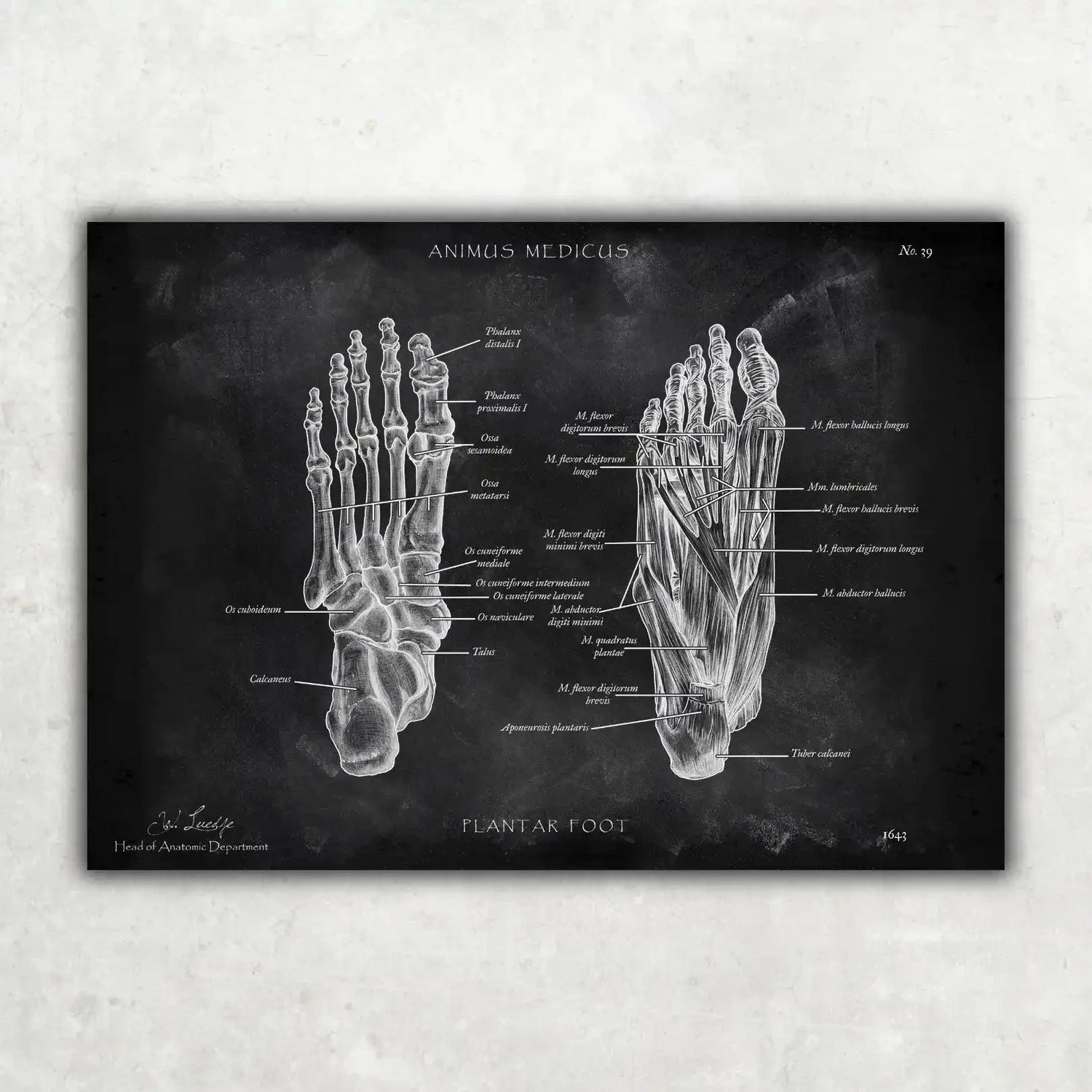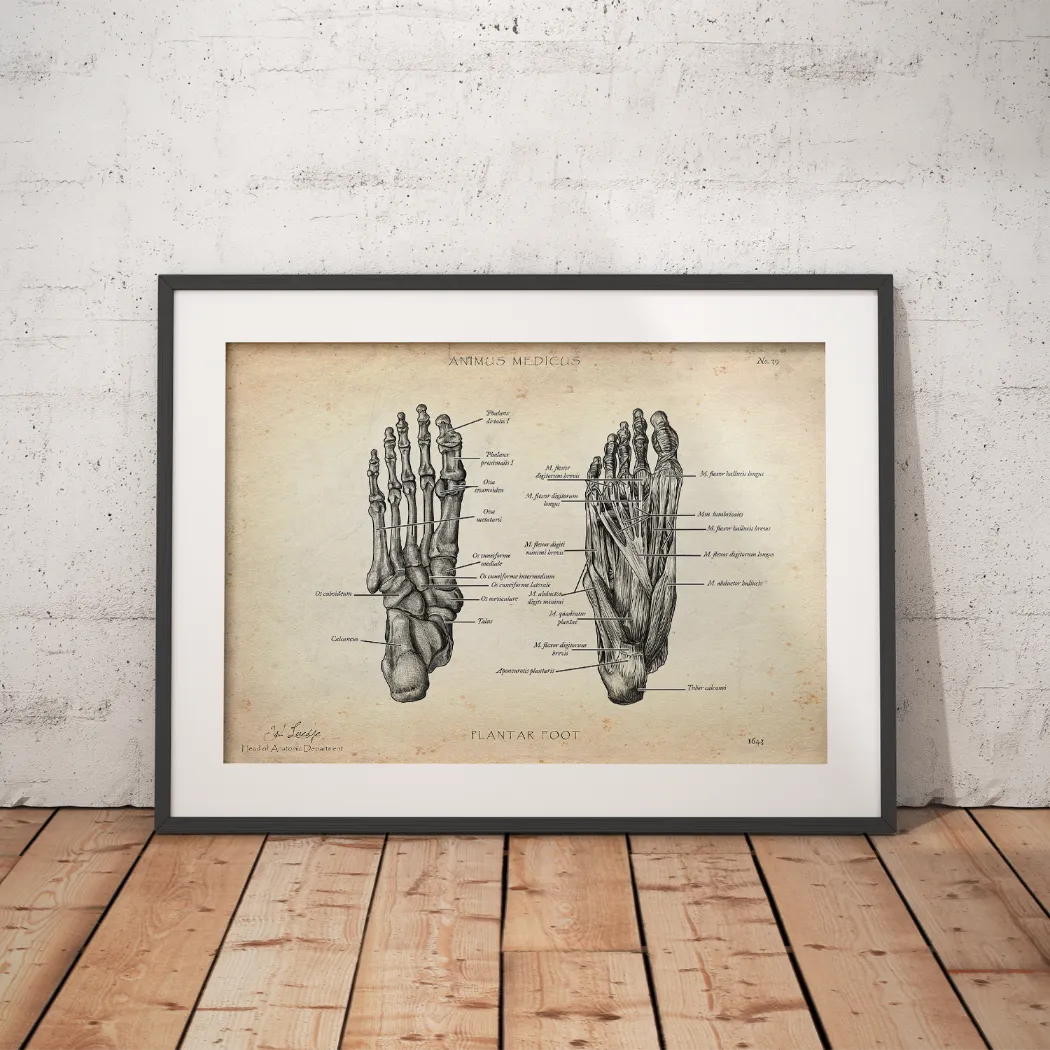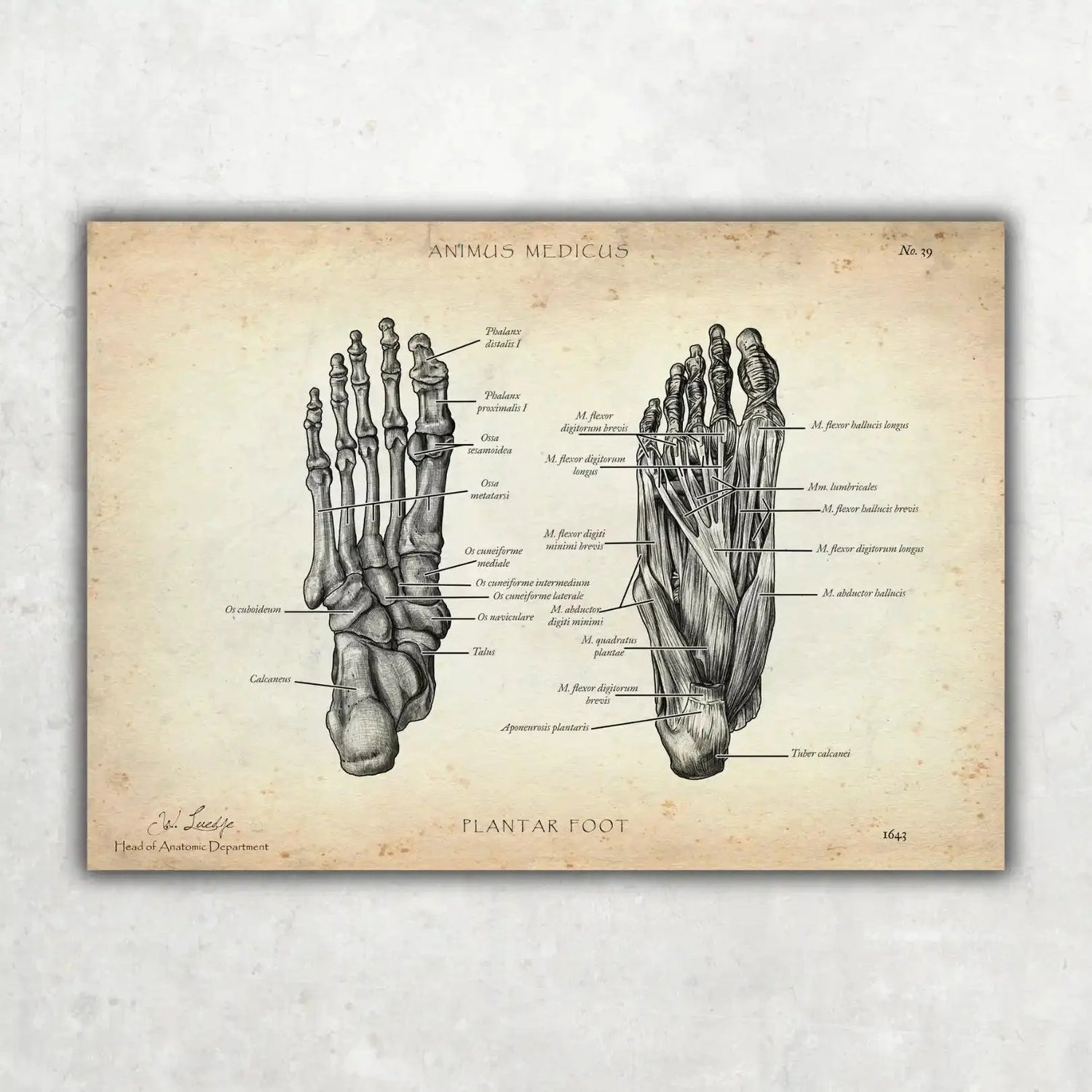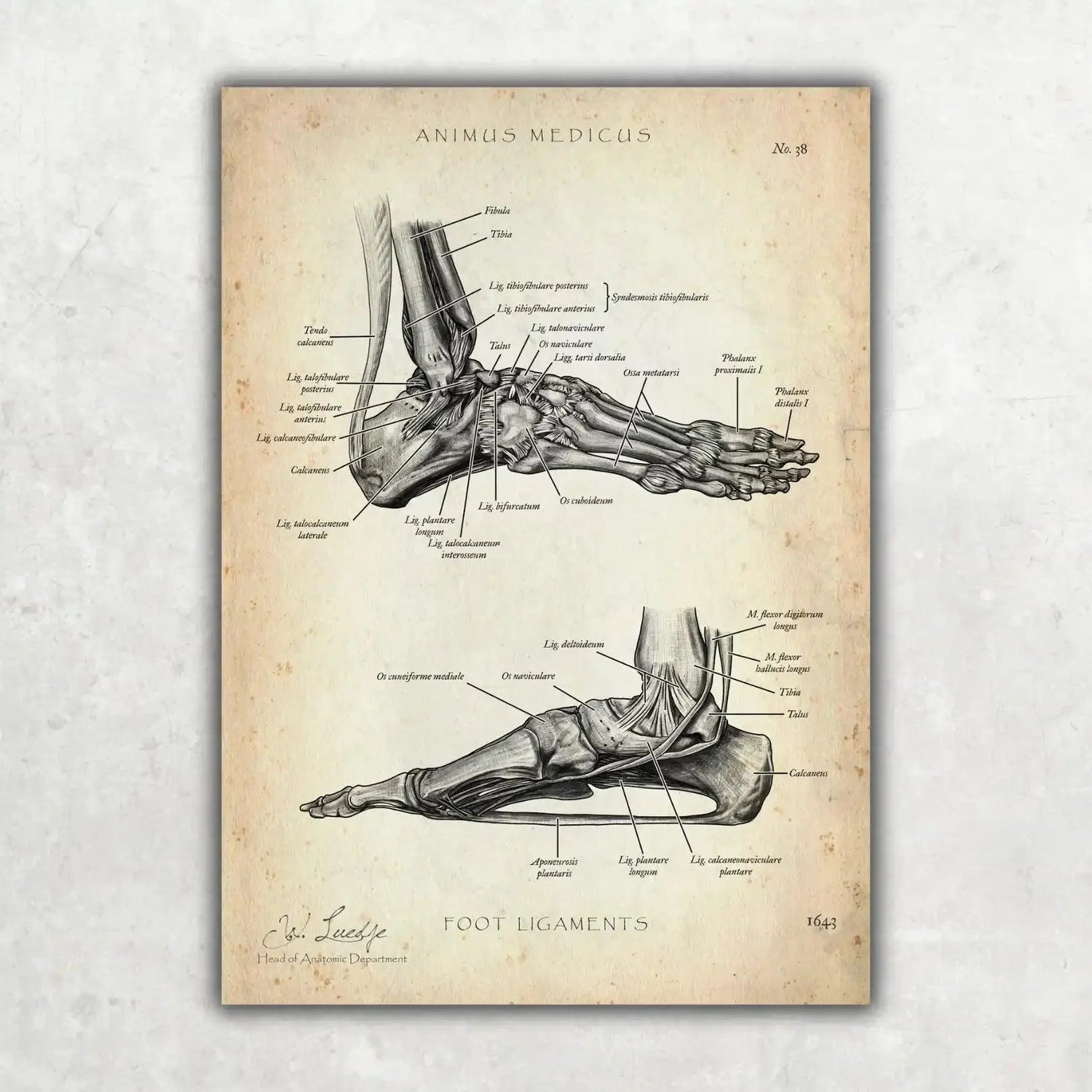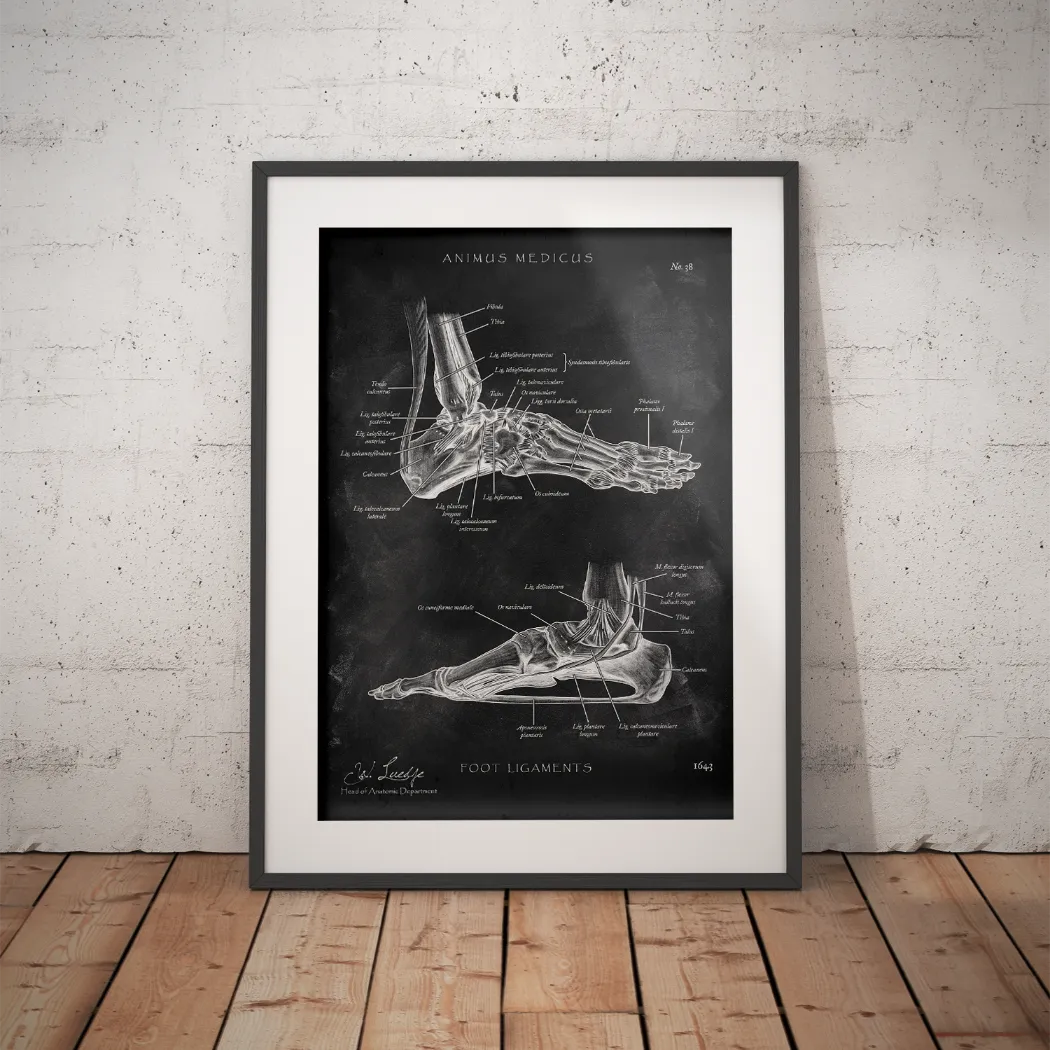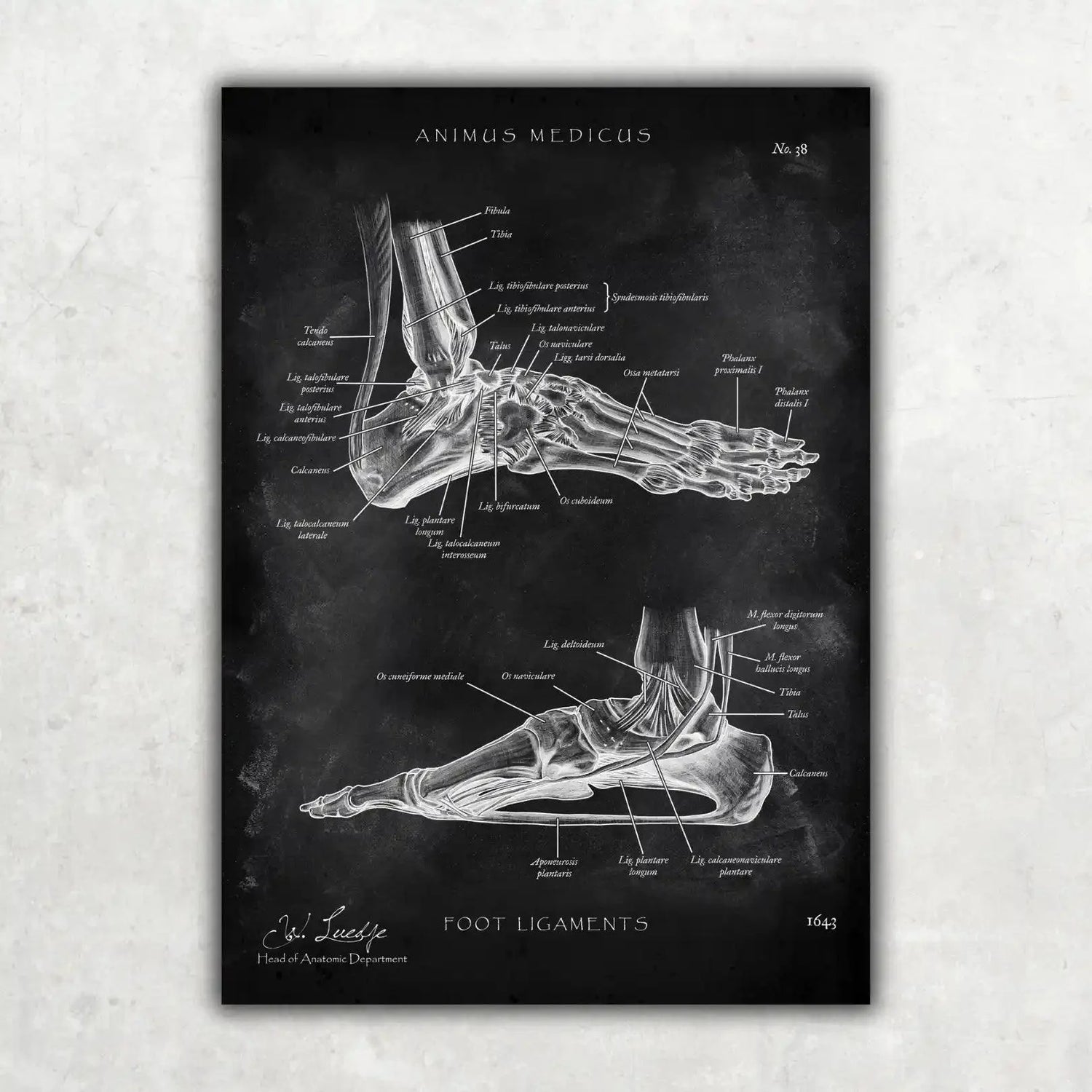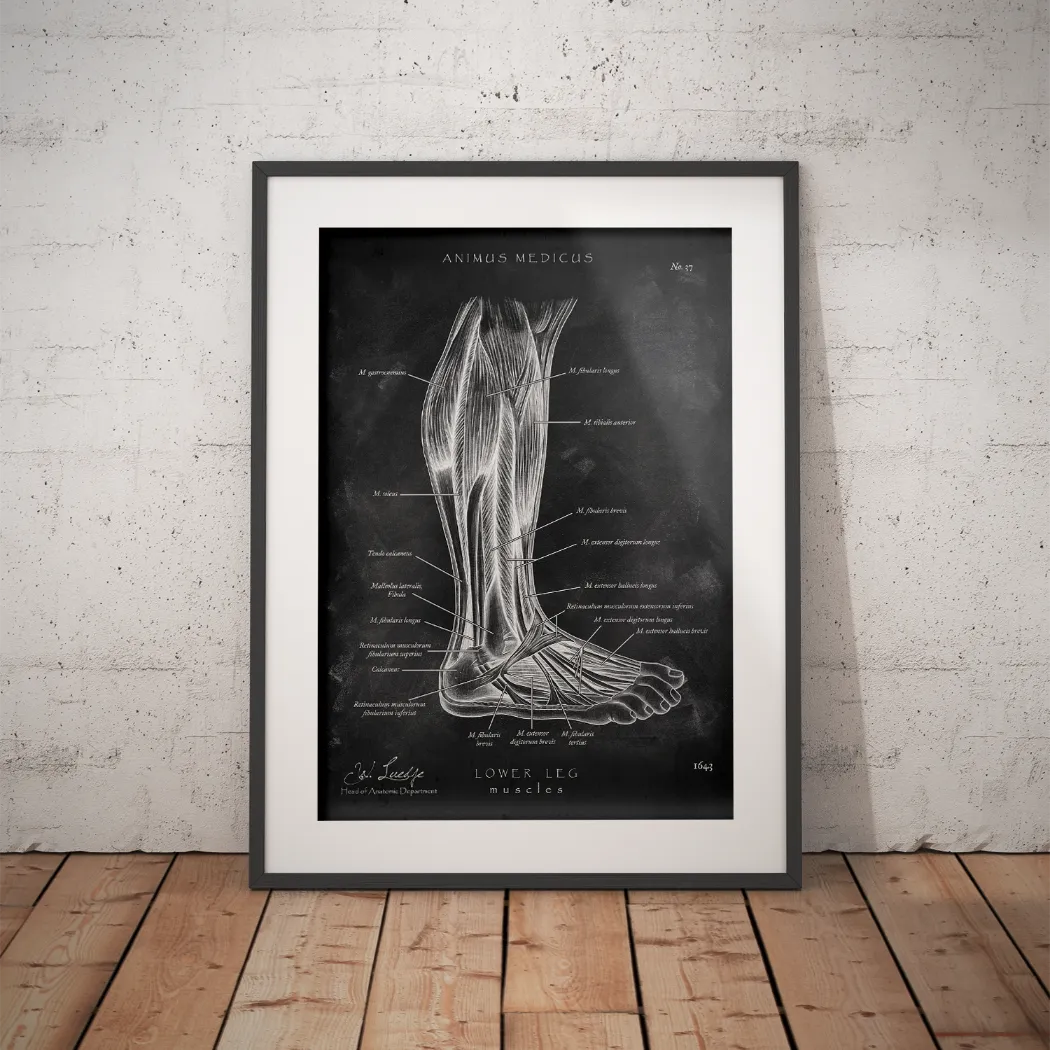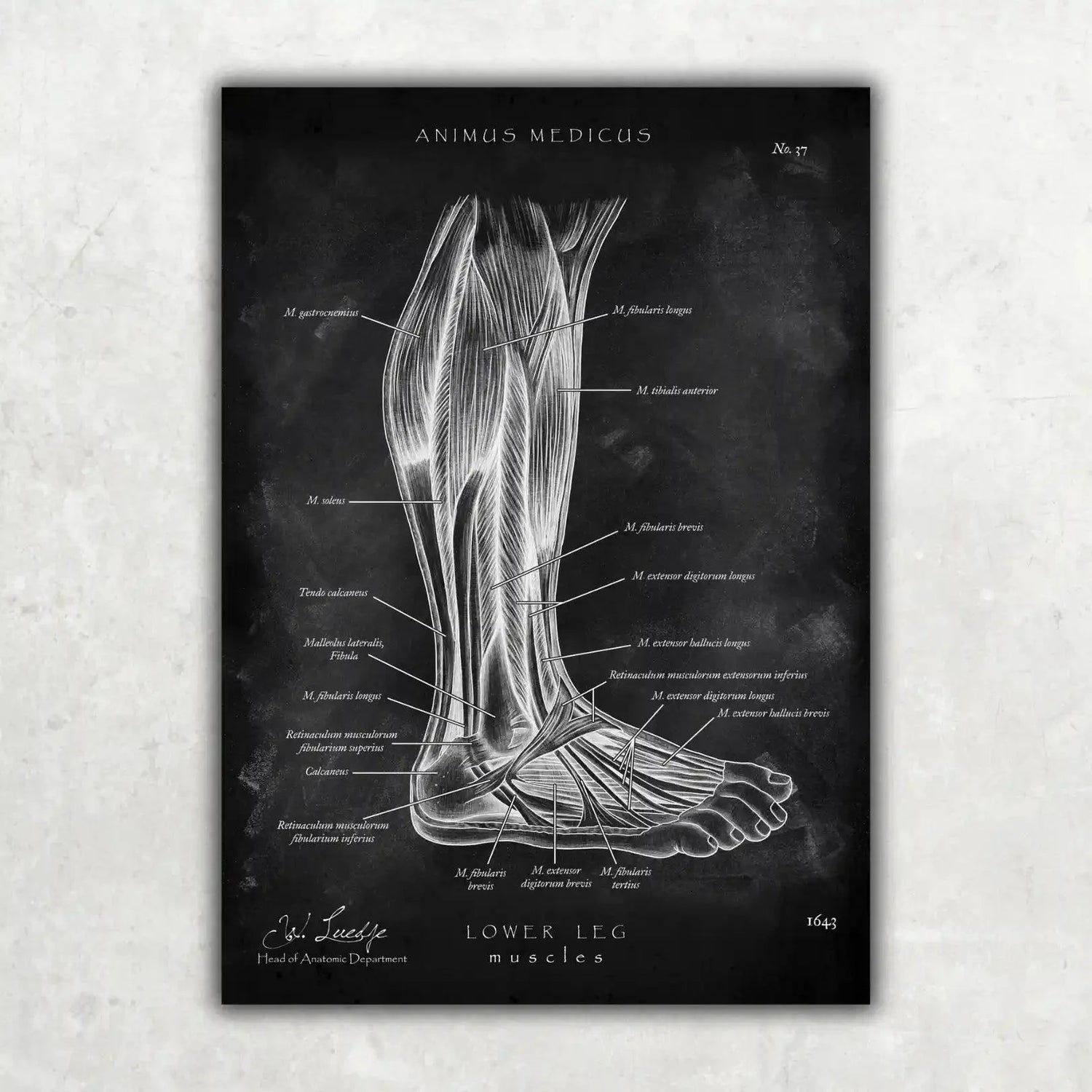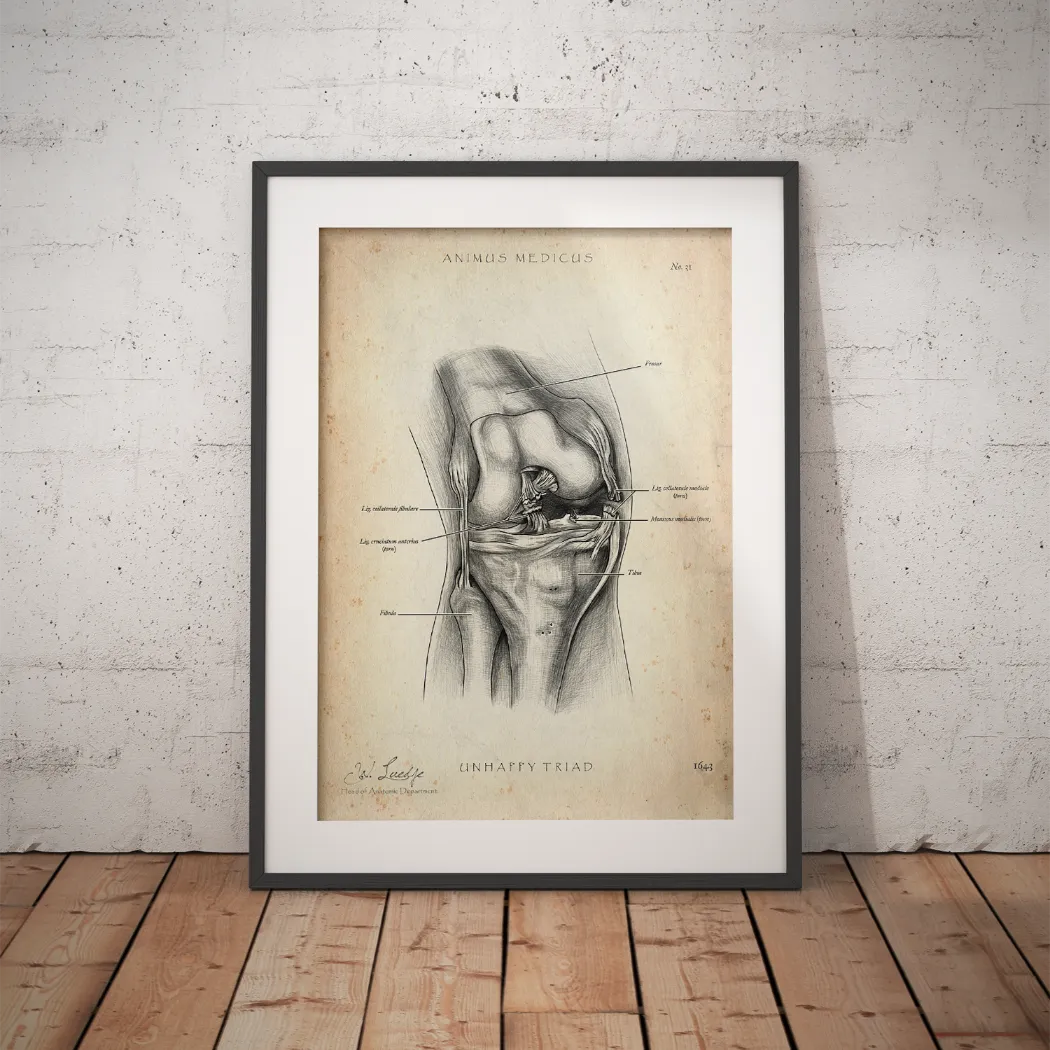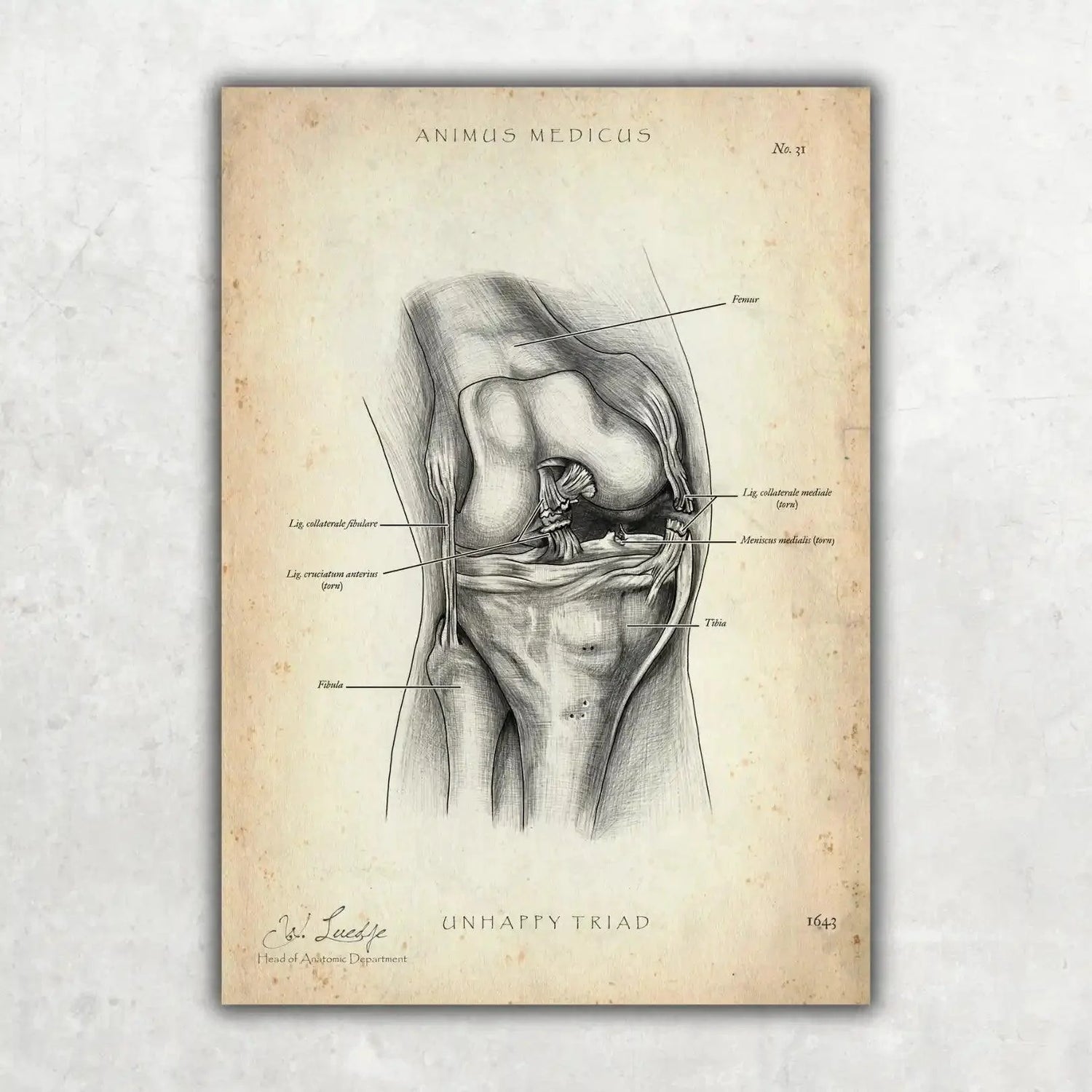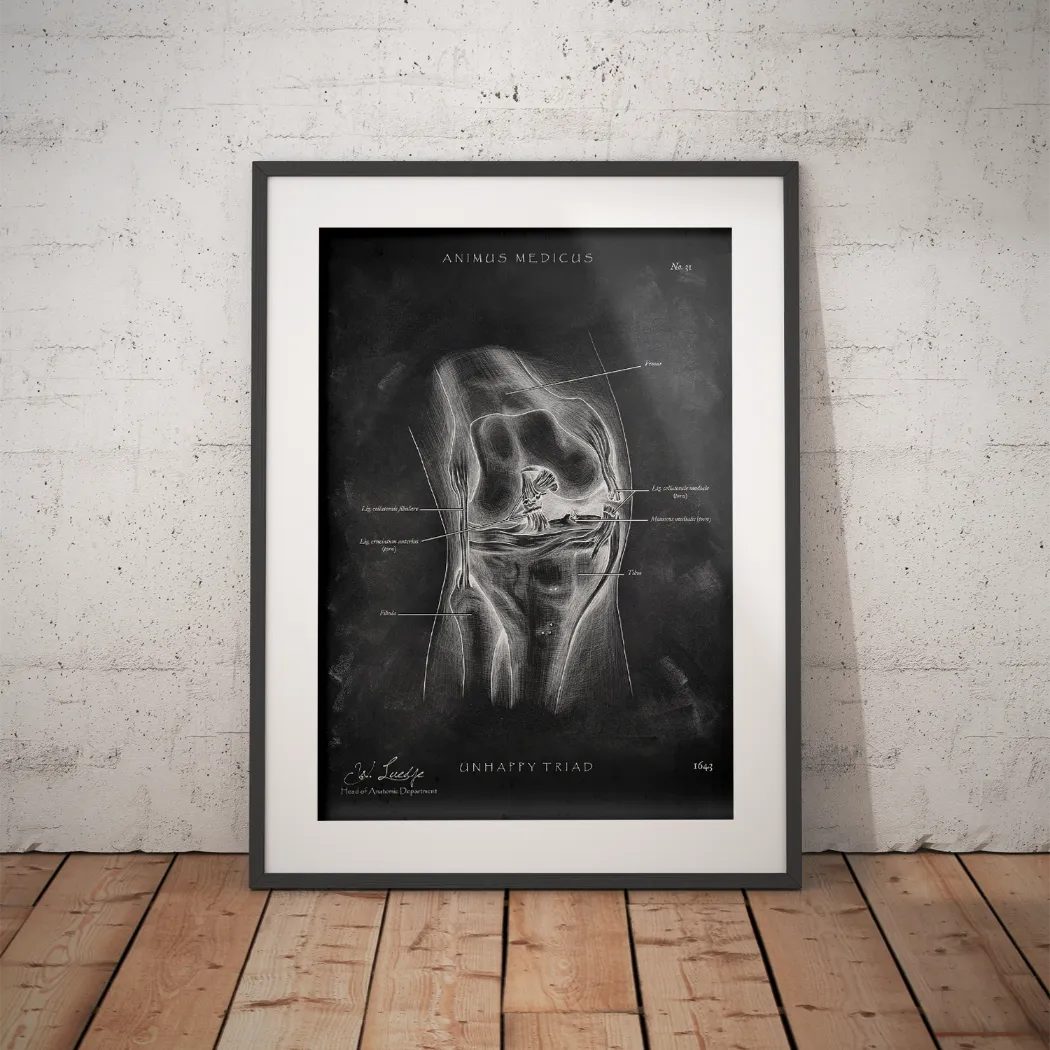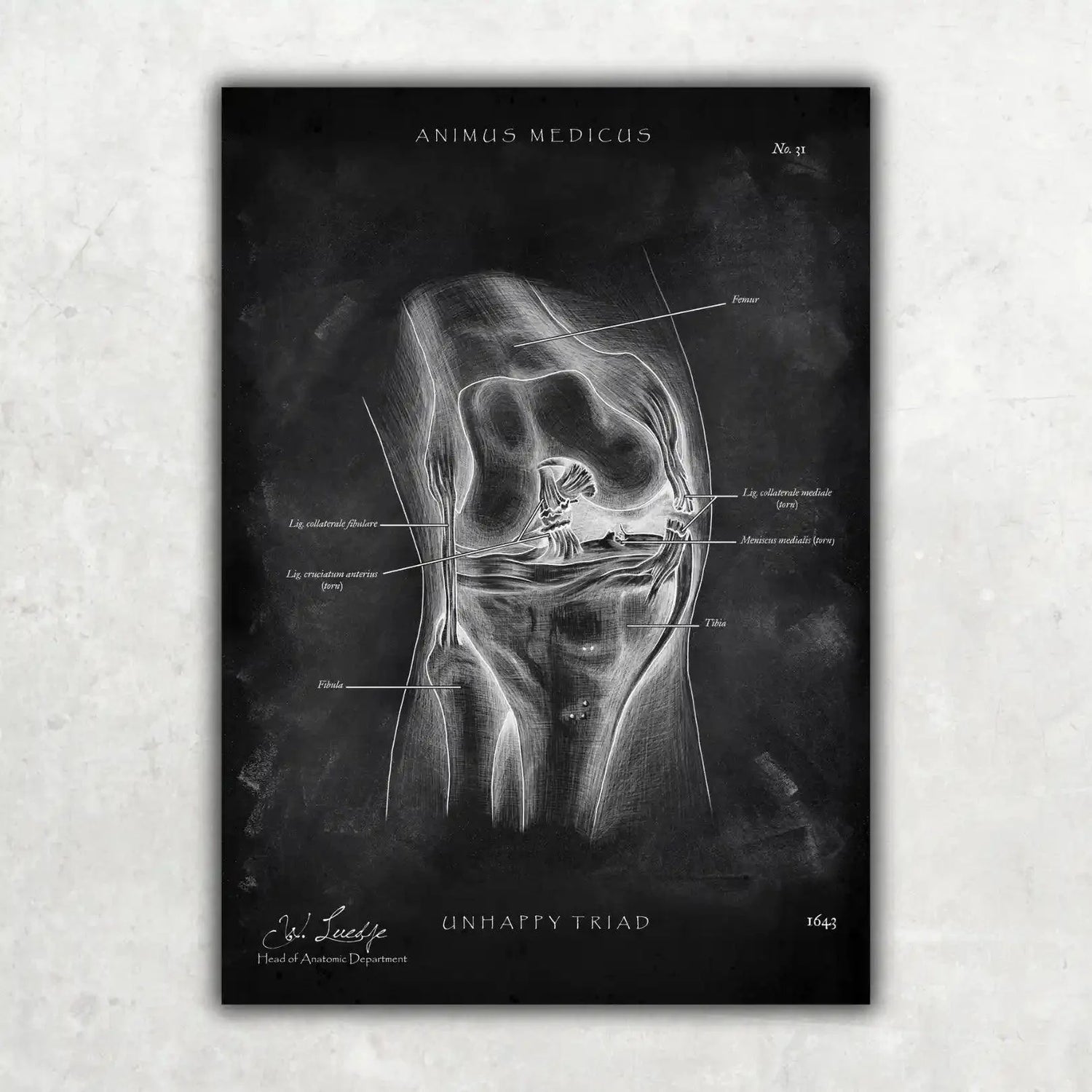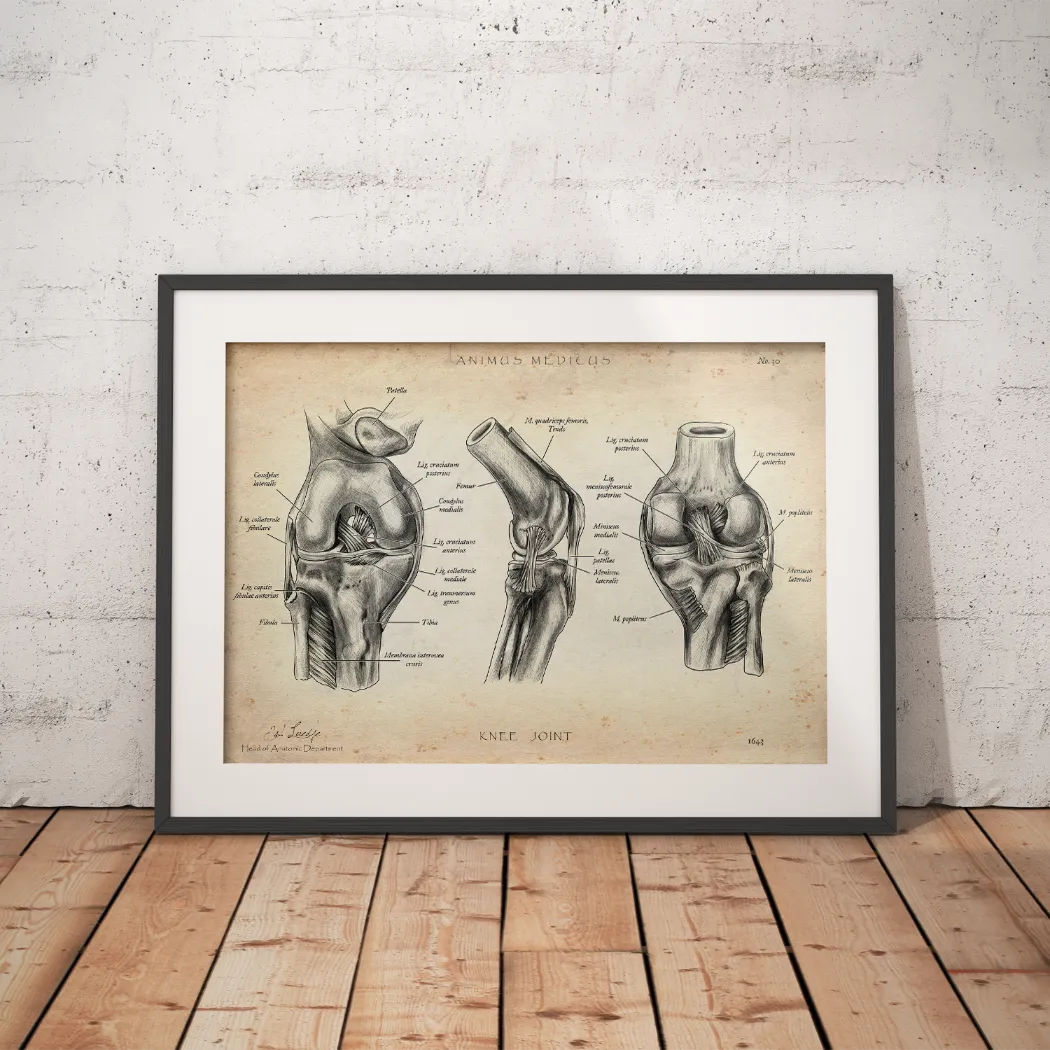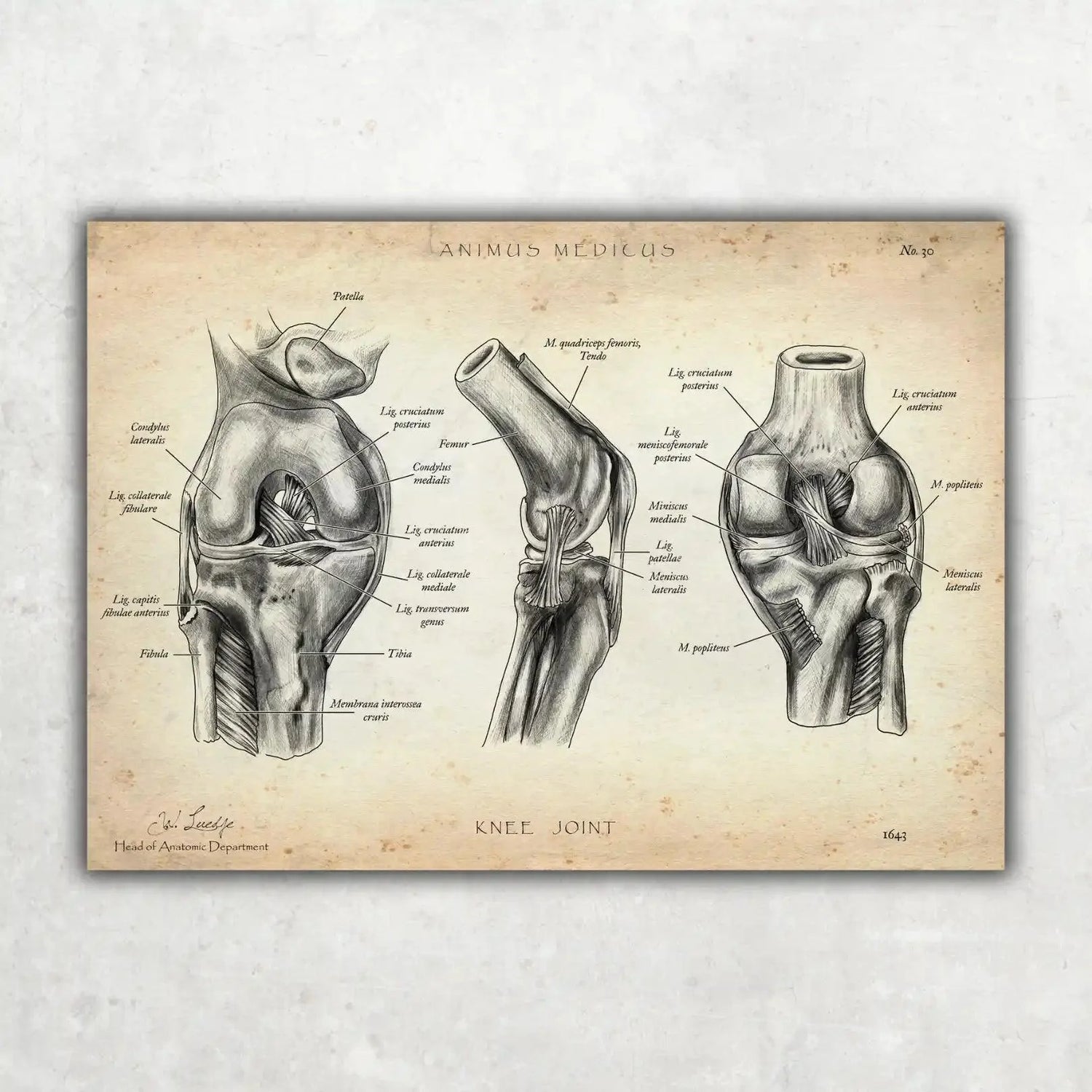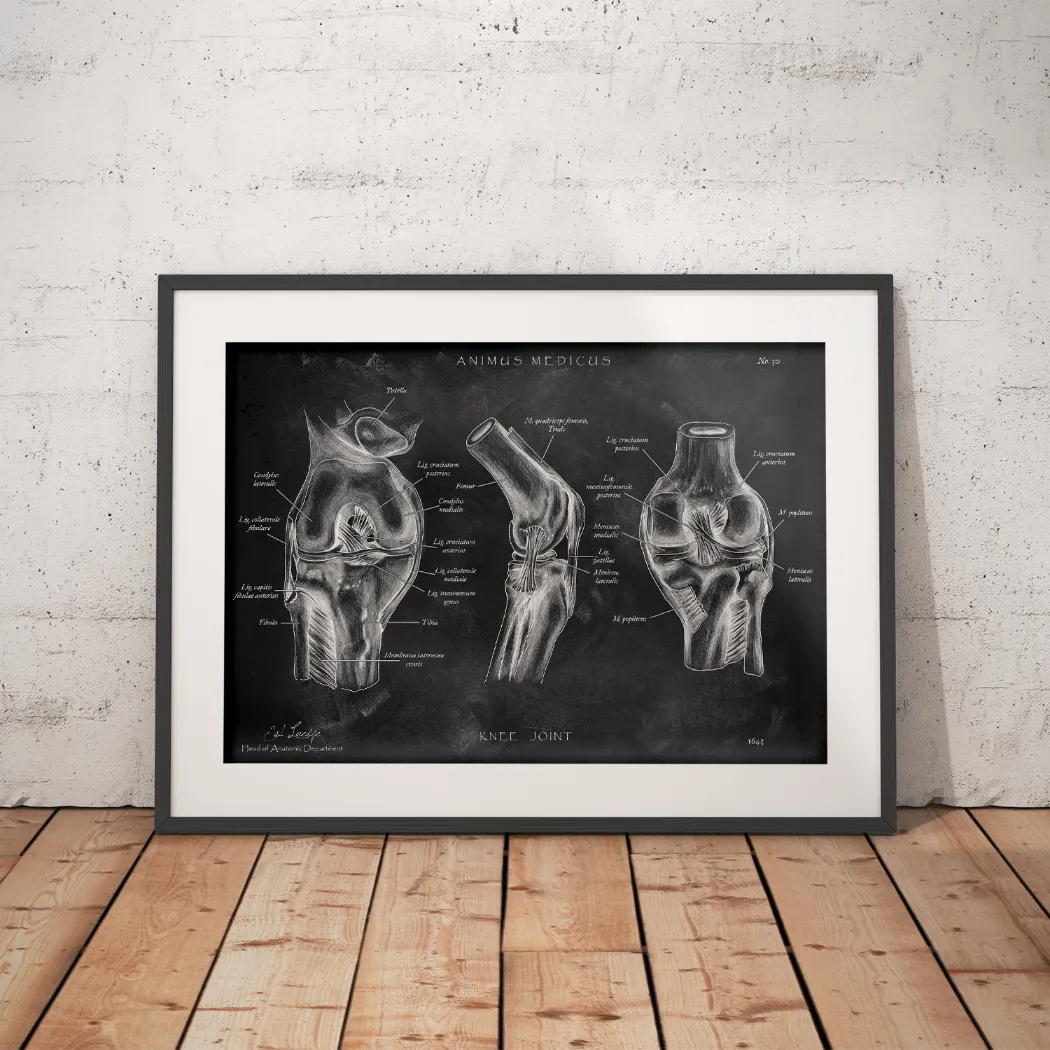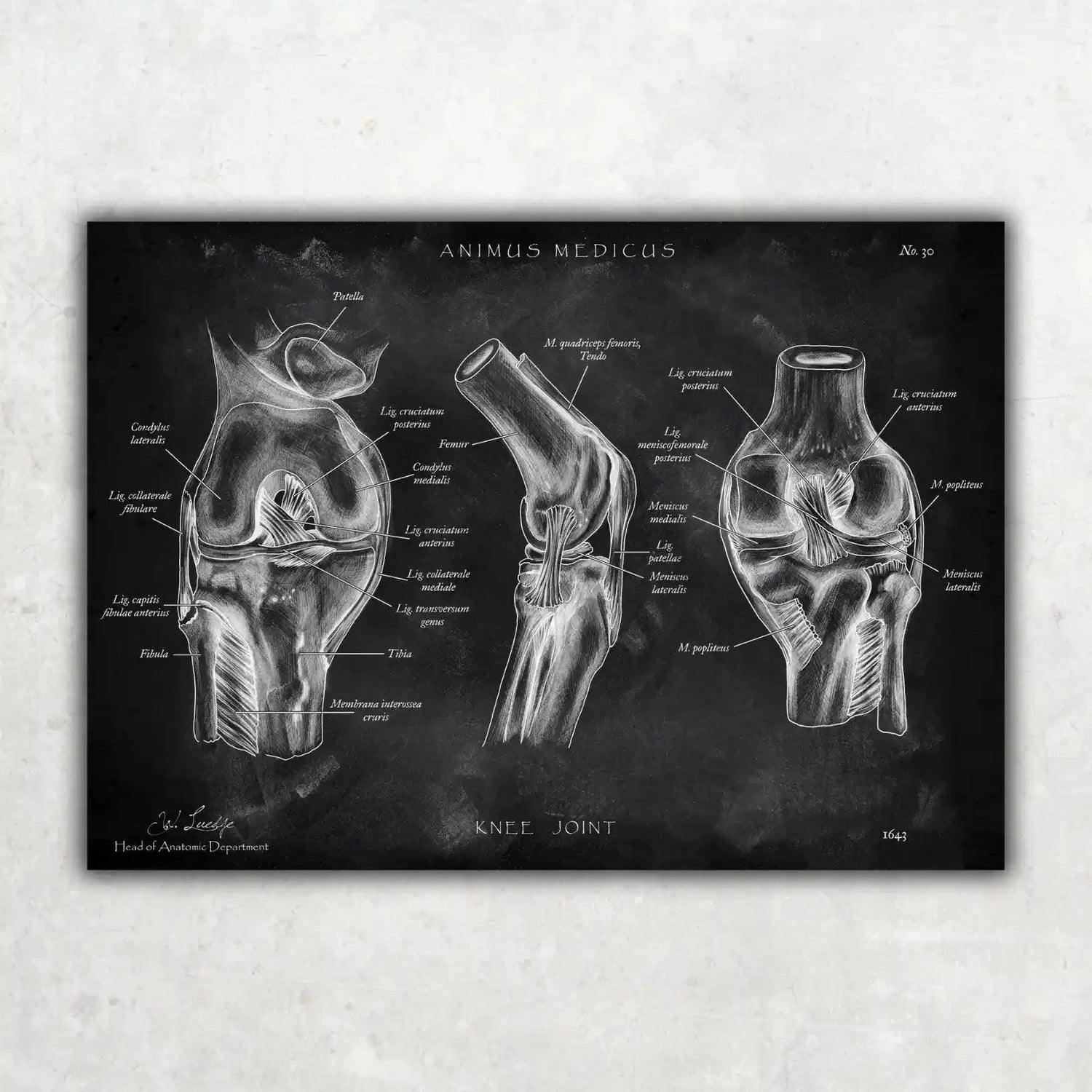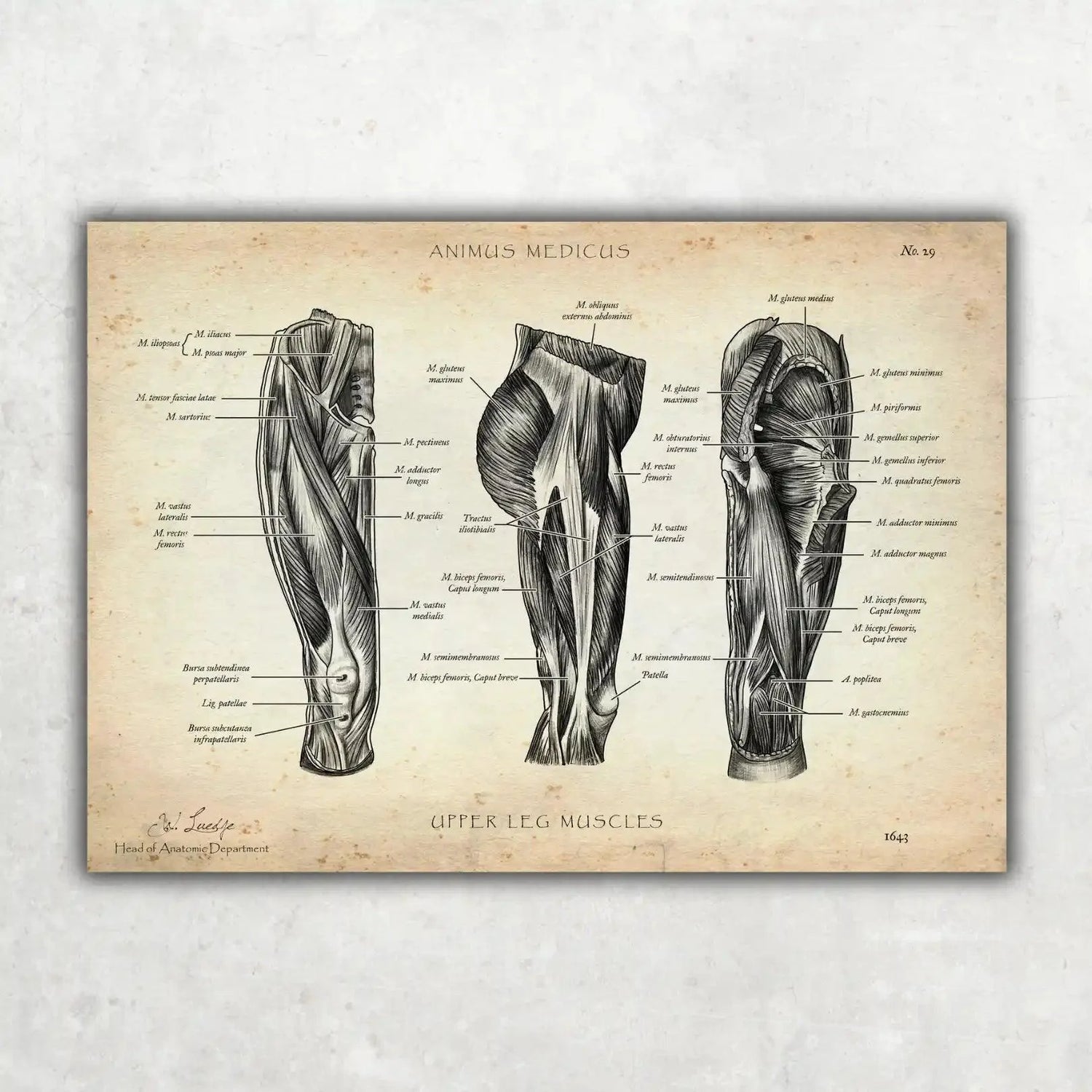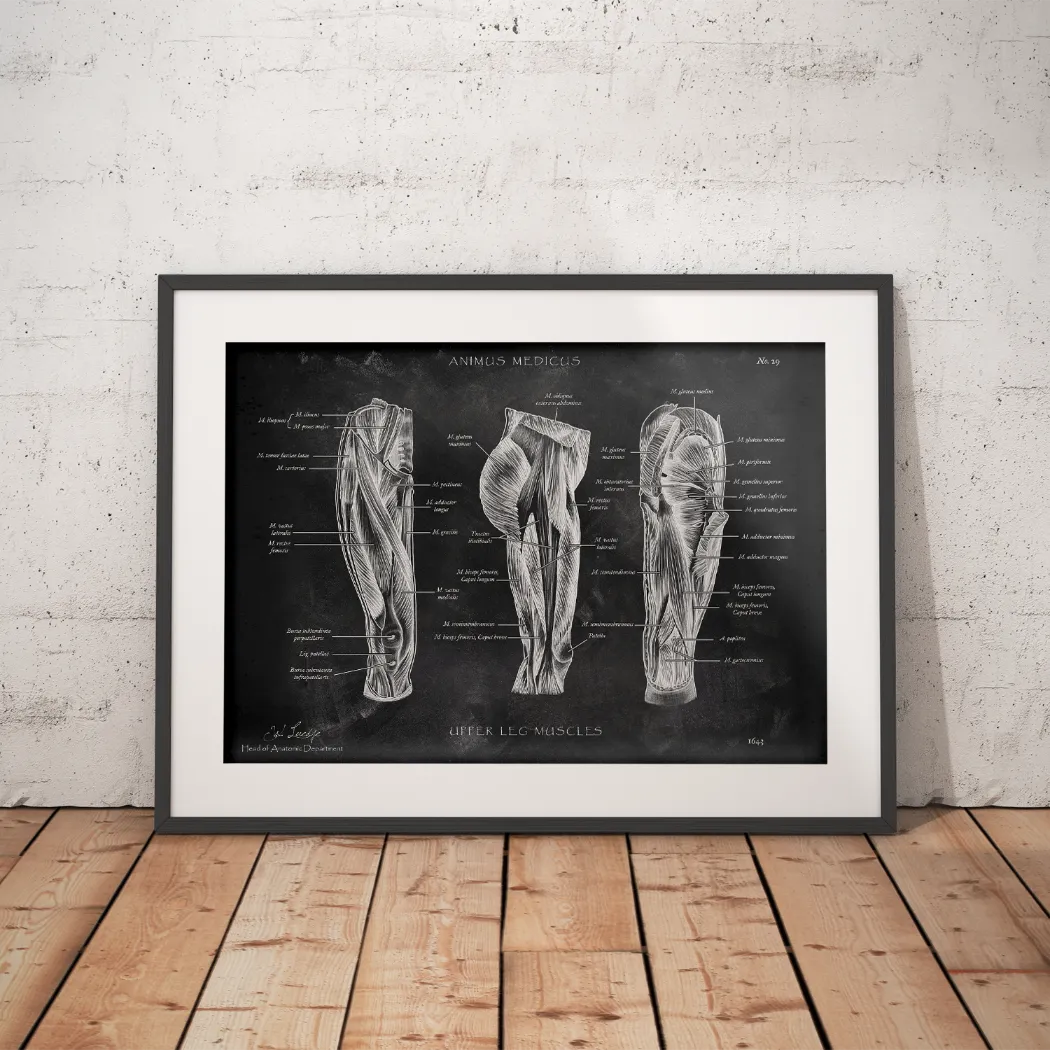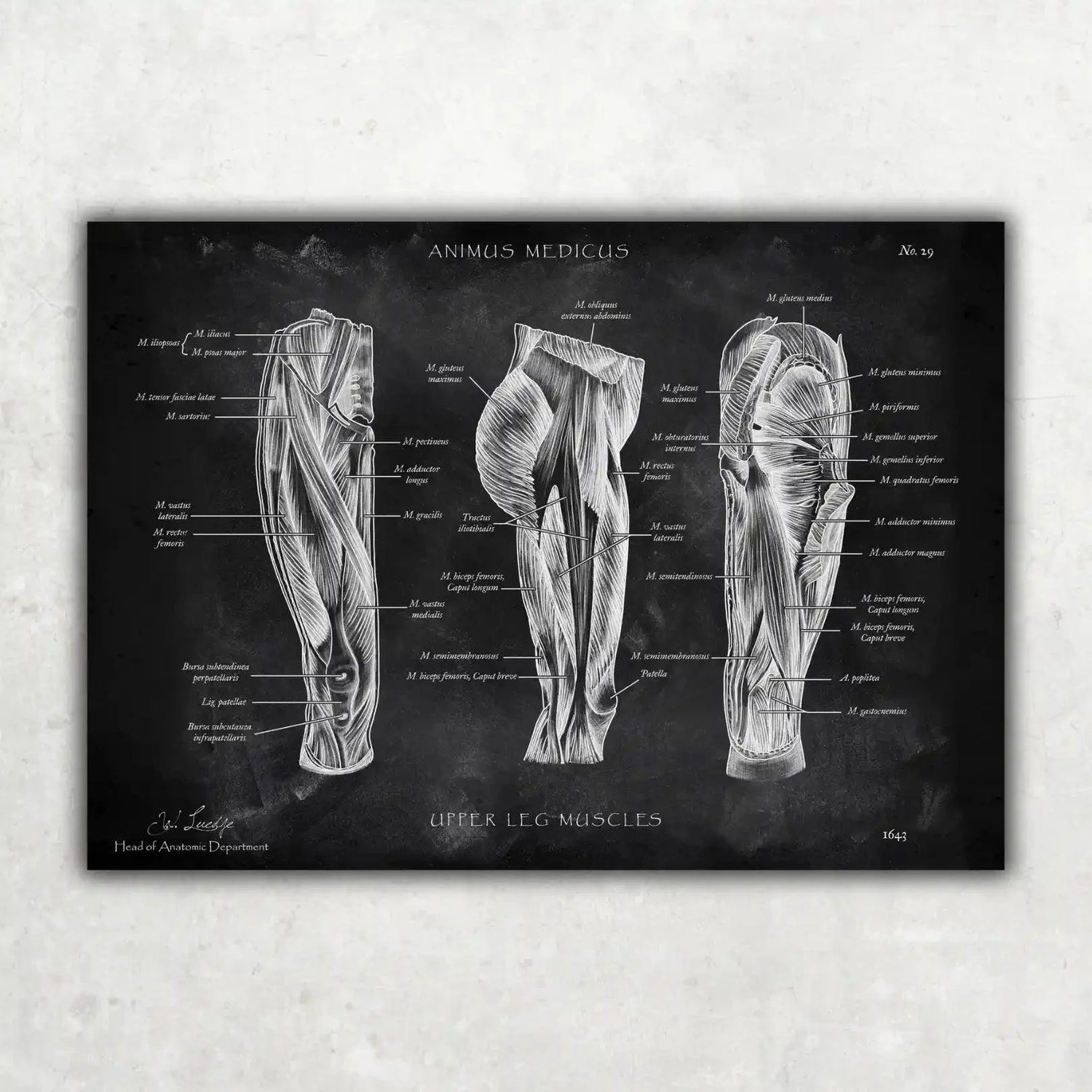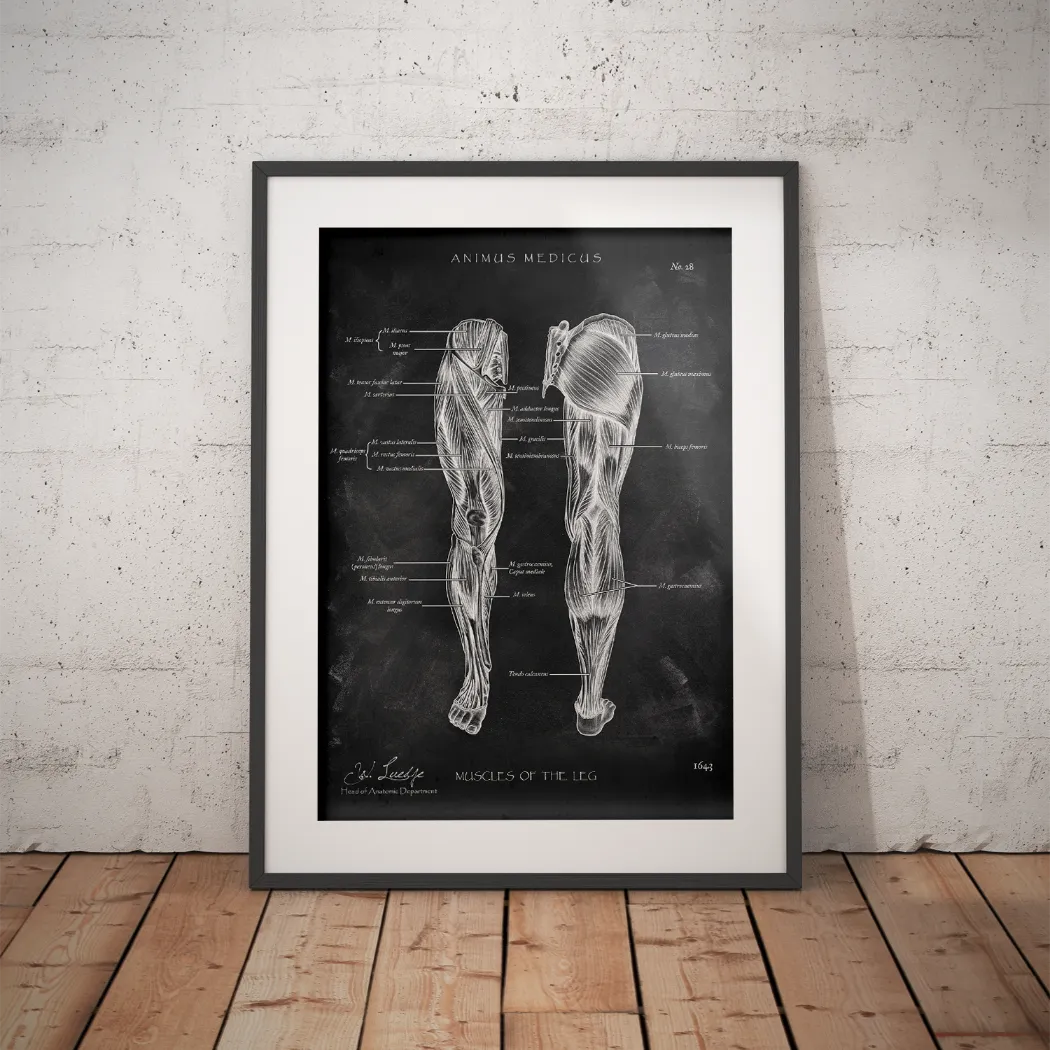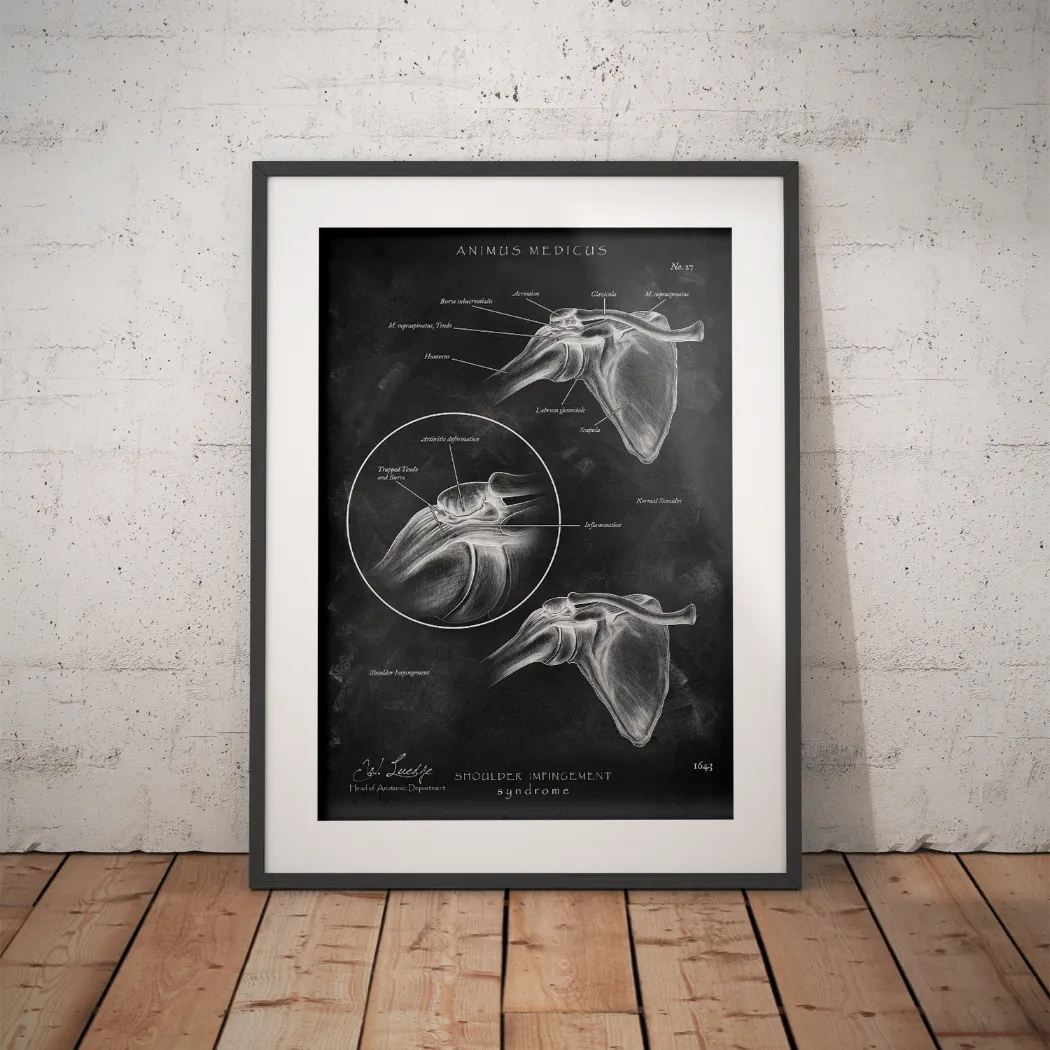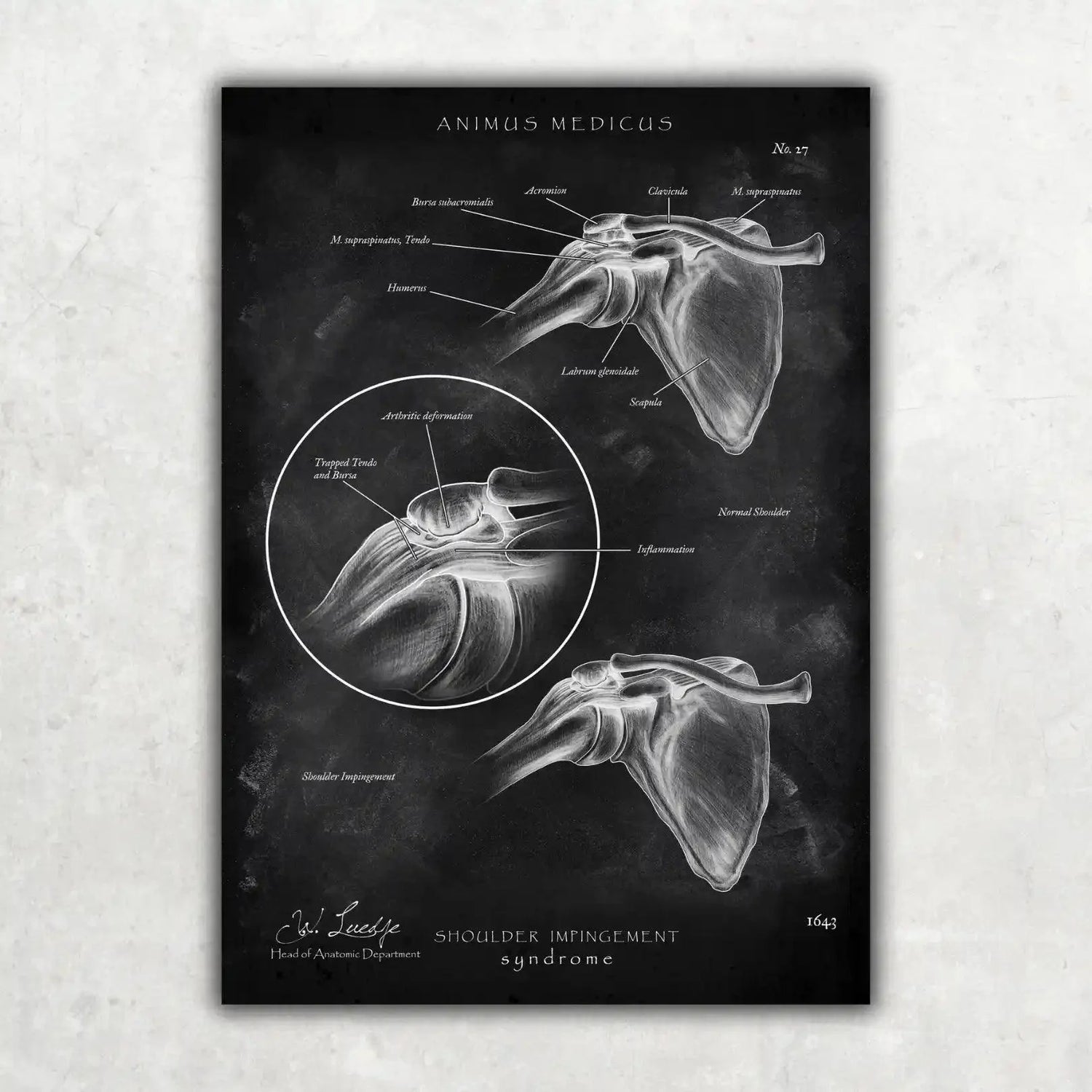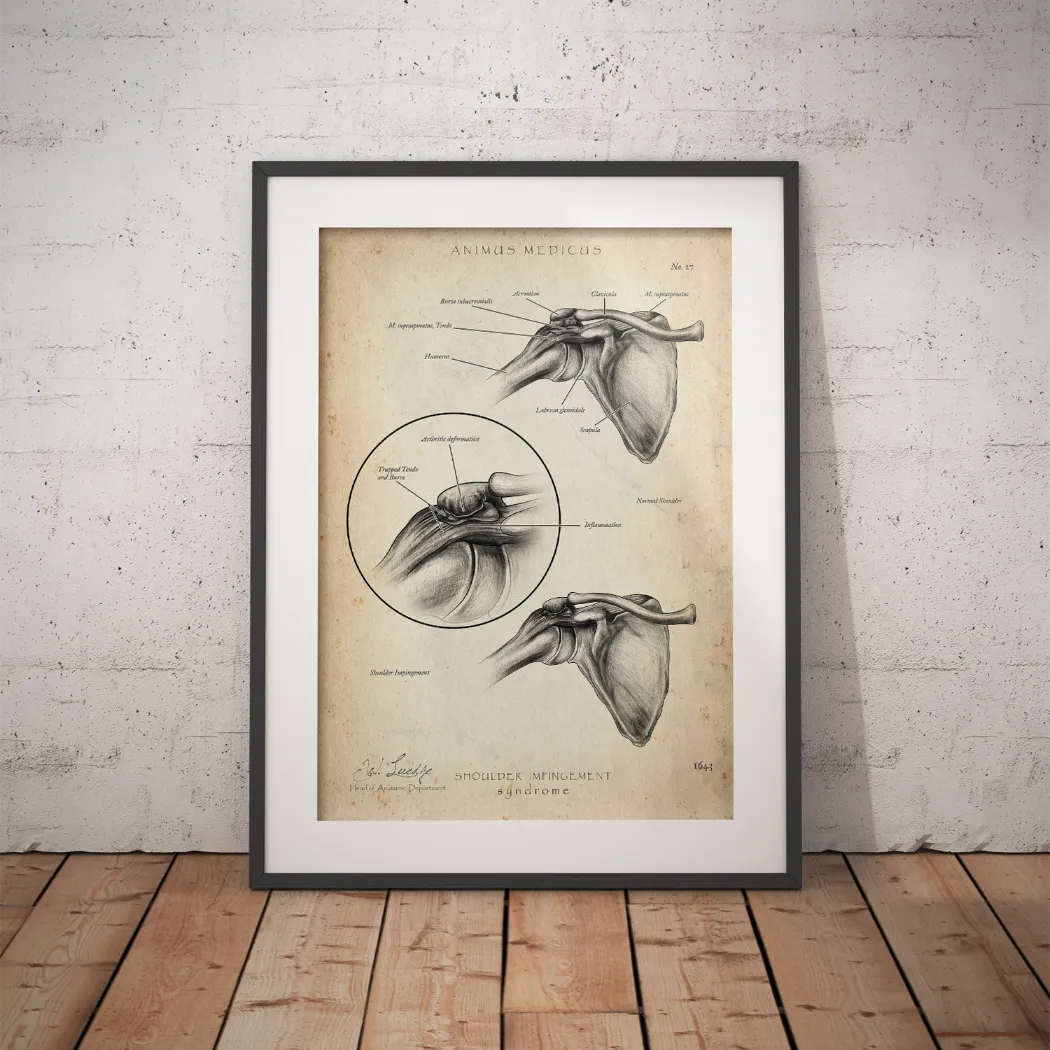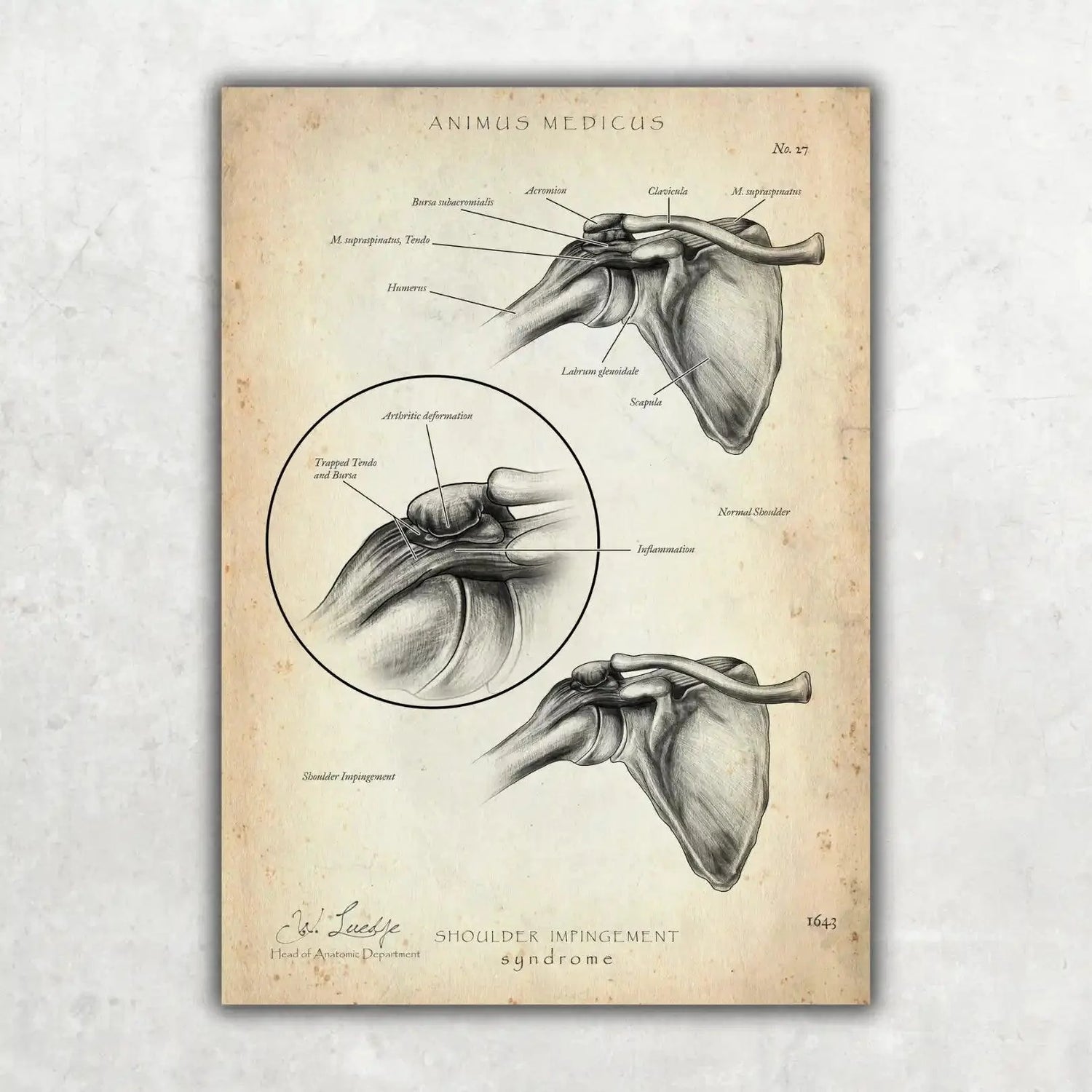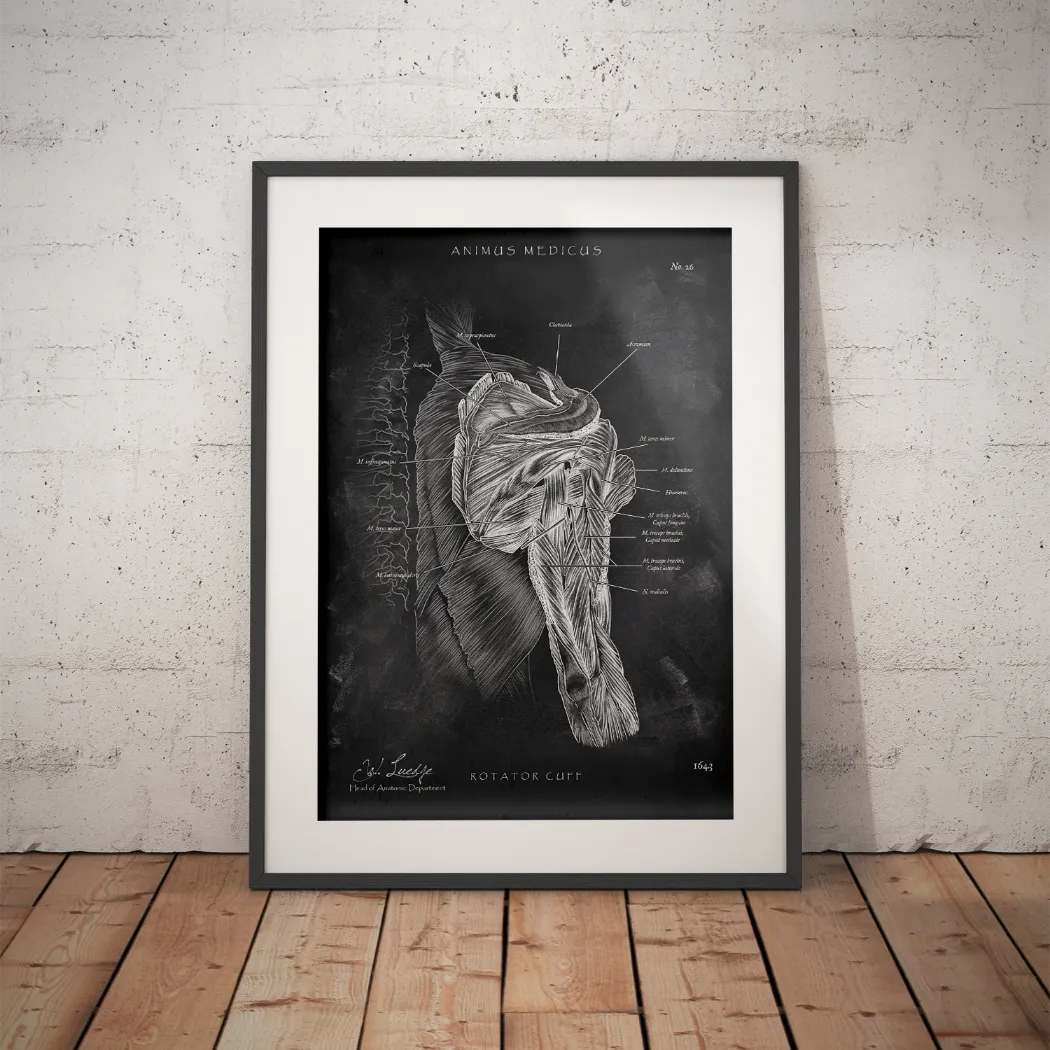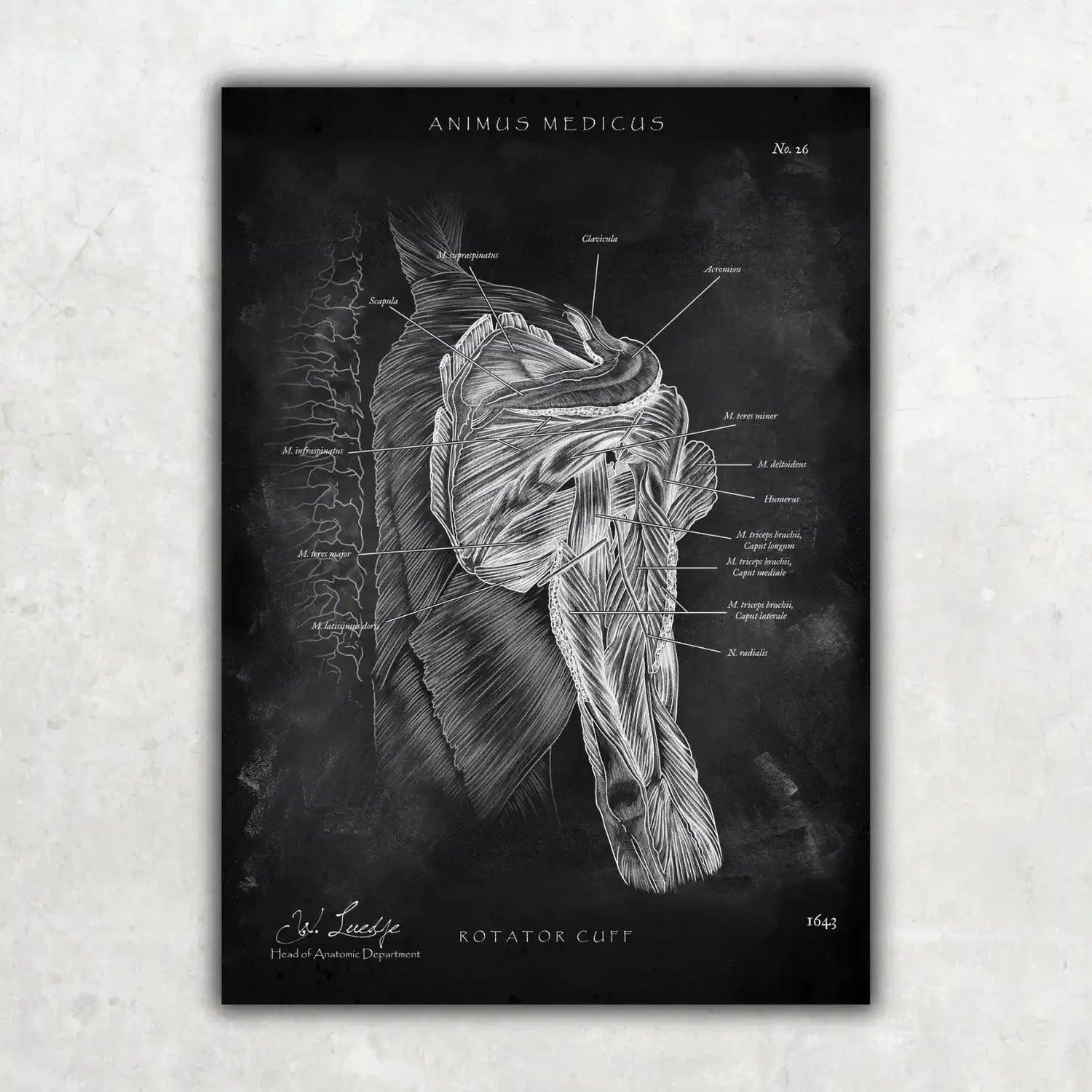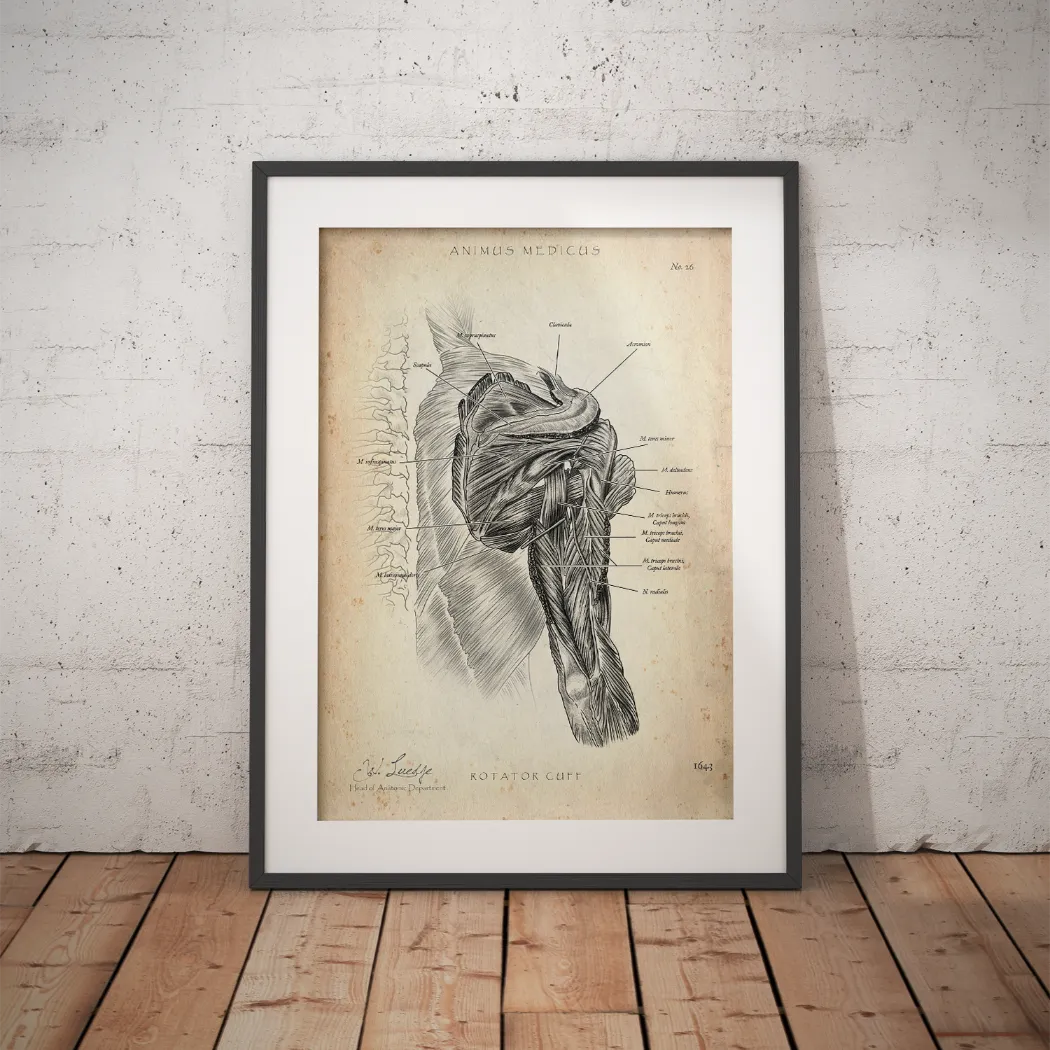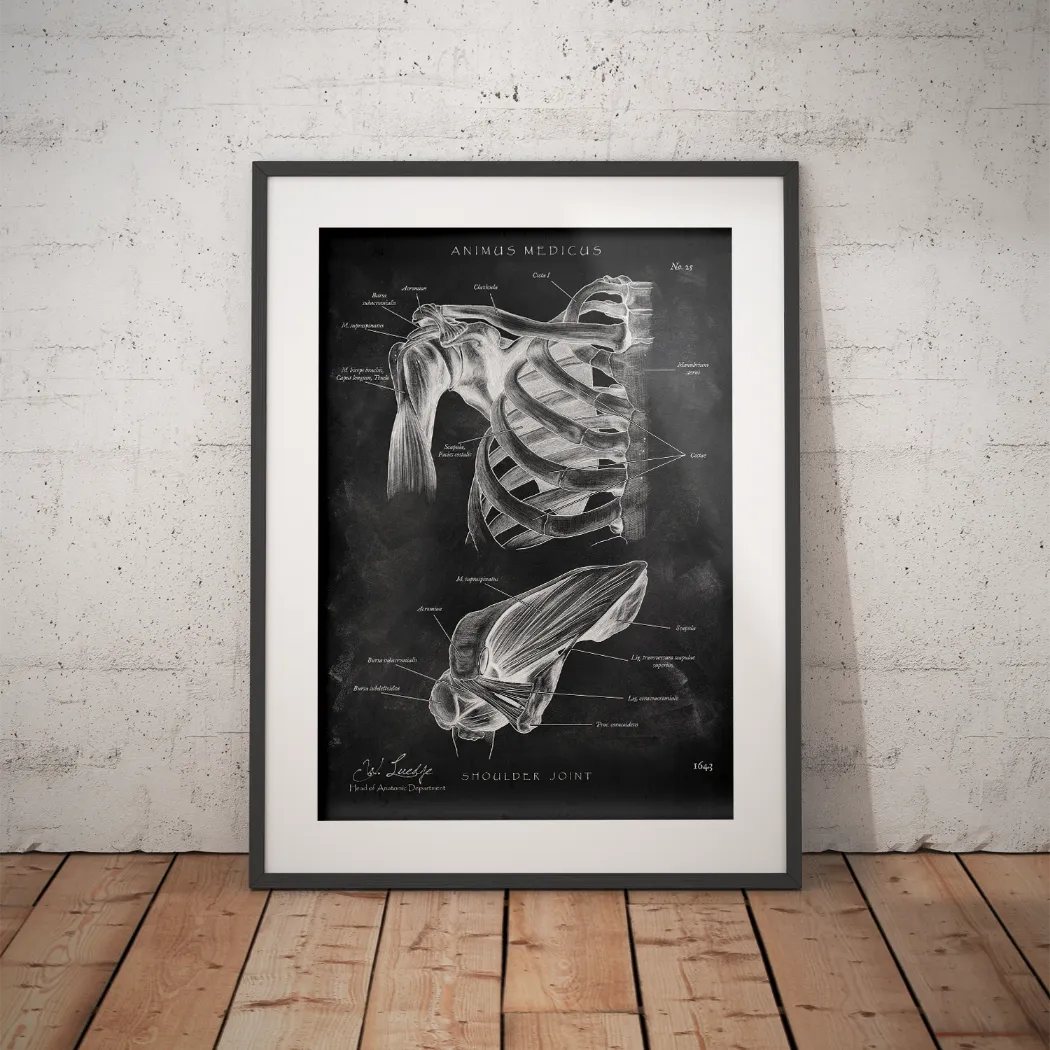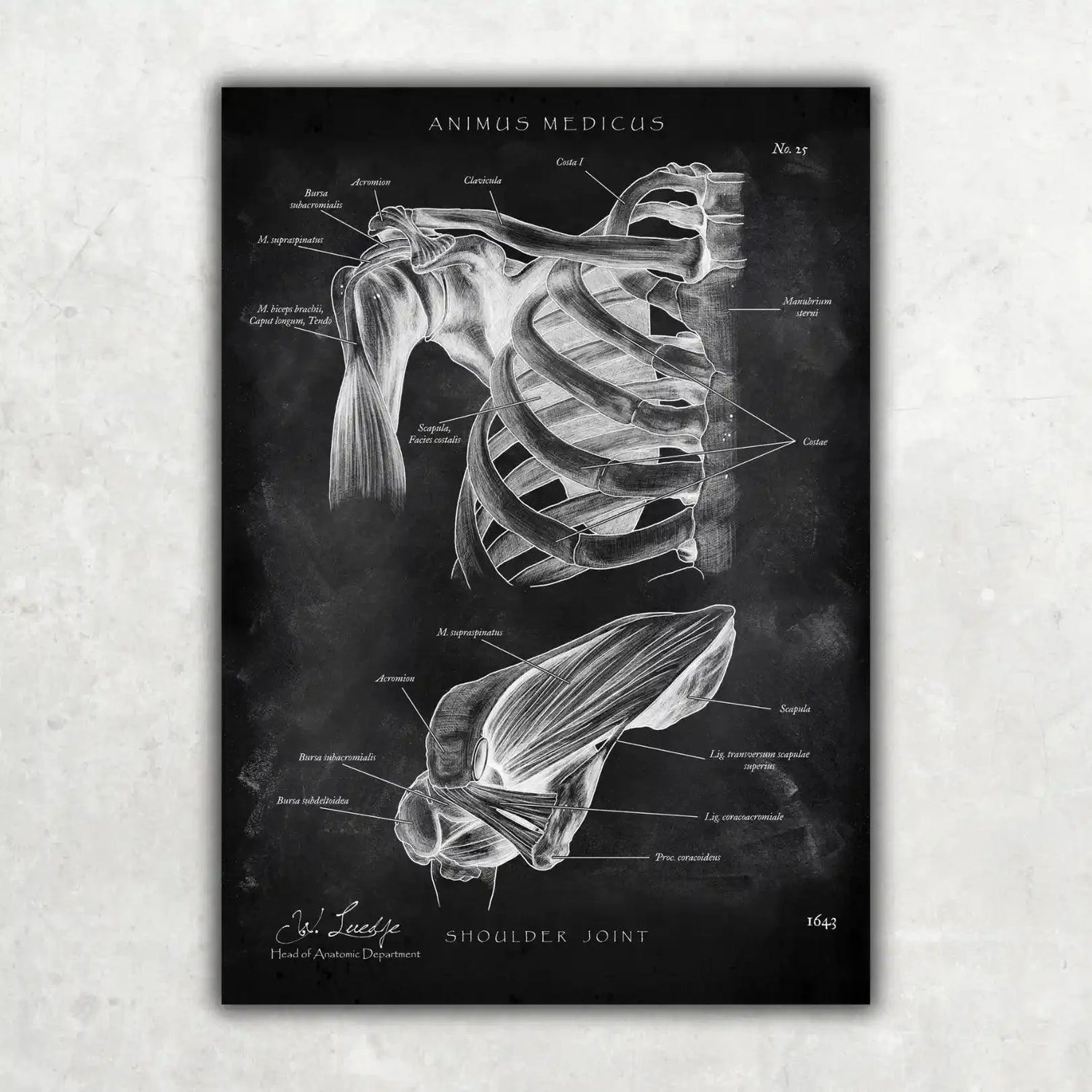Sort by:
101 products
101 products
The foundation of every movement
Some joints have few functions, while others have many. The hip joint is one of the most important joints in stabilizing and executing countless movements.
When it comes to sciatica, the exact structure of the hip and the course of the sciatic nerve are essential for understanding the cause of pain and injury. #piriformissyndrome
But how does the notorious piriformis pain actually develop?
If you are not yet able to explain this perfectly to your patients, then this motif is perfect for you to help your patients in the best possible way.
Incidentally, the motif also looks incredibly good.
What you get:
- Overview of the hip
- Printed on high-quality premium paper
- UV protective laminate for long-lasting colors
- 100% satisfaction guarantee
Almost every athlete is familiar with this injury
Some joints are more susceptible to injury than others. The ankle joint is definitely the most common site of sports injuries.
Almost every contact athlete has suffered at least a minor ankle injury at some point. One wrong step, one wrong landing, and you twist your ankle.
But what actually happens when you twist your ankle and which ligaments are overstretched?
If you are not yet able to explain this to your patients perfectly, then this motif is perfect for you to help your patients in the best possible way.
What's more, the motif also looks incredibly good.
What you get:
- Overview of ankle injuries
- Printed on high-quality premium paper
- UV protective laminate for long-lasting colors
- 100% satisfaction guarantee
Almost every athlete is familiar with this injury
Some joints are more susceptible to injury than others. The ankle joint is definitely the most common site for sports injuries.
Almost every contact athlete has suffered at least a minor ankle injury at some point. One wrong step, one wrong landing, and you twist your ankle.
But what actually happens when you twist your ankle and which ligaments are overloaded?
If you are not yet able to explain this to your patients perfectly, then this motif is perfect for you to help your patients in the best possible way.
What's more, the motif also looks incredibly good.
What you get:
- Overview of ankle injuries in the Chalkboard Edition
- Printed on high-quality premium paper
- UV protective laminate for long-lasting colors
- 100% satisfaction guarantee
What does the foot actually look like?
The foot has a number of distinctive features. This does not exactly make it easier to explain its complex anatomy and structure.
We have developed this motif for you so that you can explain to your patients in the best possible way why certain structures hurt or how to strengthen the arch of the foot.
It will help you explain the anatomy and structure of the foot in an easy-to-understand way.
What's more, the motif also looks incredibly good.
What you get:
- Overview of foot anatomy in the Chalkboard Edition
- Printed on high-quality premium paper
- UV protective laminate for long-lasting colors
- 100% satisfaction guarantee
What does the foot actually look like?
The foot has a number of distinctive features. This does not exactly make it easier to explain its complex anatomy and structure.
We have developed this motif for you so that you can explain to your patients in the best possible way why certain structures hurt or how to strengthen the arch of the foot.
It will help you explain the anatomy and structure of the foot in an easy-to-understand way.
What's more, the motif also looks incredibly good.
What you get:
- Overview of foot anatomy
- Printed on high-quality premium paper
- UV protective laminate for long-lasting colors
- 100% satisfaction guarantee
Do you know all the important ligaments in the foot?
It can be really difficult to memorize the complex anatomy of the foot in detail.
But especially when it comes to the foot, knowing the anatomical details inside out is extremely helpful in therapy and prevention, enabling you to help your patients in the best possible way.
So if you're not 100% sure what each ligament is called and where it runs, then this motif is just right for you, so you can explain it to your patients visually.
What's more, the motif also looks incredibly good.
What you get:
- Overview of the ligaments of the foot
- Printed on high-quality premium paper
- UV protective laminate for long-lasting colors
- 100% satisfaction guarantee
Do you know all the important ligaments in the foot?
It can be really difficult to memorize the complex anatomy of the foot in detail.
But especially when it comes to the foot, knowing the anatomical details inside out is extremely helpful in therapy and prevention, enabling you to help your patients in the best possible way.
So if you're not 100% sure what each ligament is called and where it runs, then this motif is just right for you, so you can explain it to your patients visually.
What's more, the motif also looks incredibly good.
What you get:
- Overview of the ligaments of the foot in the Chalkboard Edition
- Printed on high-quality premium paper
- UV protective laminate for long-lasting colors
- 100% satisfaction guarantee
Which muscles stabilize the ankle joint?
The ligaments in the foot are very susceptible to injury. Ligament tears and ruptures are particularly common in sports. ⛹️
But what exercises should you show your patients to help them regain stability?
This motif helps you and your patients to understand the structure of the foot and demonstrates the necessity of certain exercises.
What's more, the motif also looks incredibly good.
What you get:
- Overview of the lower leg muscles in the Chalkboard Edition
- Printed on high-quality premium paper
- UV protective laminate for long-lasting colors
- 100% satisfaction guarantee
What is the Unhappy Triad?
For professional athletes, the "Unhappy Triad" is one of the most dreaded injuries. Soccer and handball players are particularly affected.
The injury to the medial meniscus, medial collateral ligament, and anterior cruciate ligament leads to extremely long breaks from sports, sometimes even ending careers.
Because this injury is so dangerous, it's crucial to thoroughly understand it. Only then can optimal prevention and therapy be achieved. ⚕️
If you can't yet perfectly explain the pathogenesis and anatomy of the Unhappy Triad, then this poster is just what you need!
What You Get:
- Detailed depiction of the Unhappy Triad
- Printed on premium quality paper
- UV-protective laminate for long-lasting colors
What is the unhappy triad?
For professional athletes, the “unhappy triad” is one of the most feared injuries of all. Soccer players and handball players are particularly affected.
Injuries to the medial meniscus, medial collateral ligament, and anterior cruciate ligament can result in horrendously long breaks from sports or even the end of a career.
Precisely because this injury is so dangerous, it is important to know and understand it in detail. Only then is optimal prevention and therapy possible. ⚕️
If you can't yet explain the pathogenesis and anatomy of the unhappy triad perfectly, then this motif is just right for you!
What you get:
- Detailed illustration of the unhappy triad in the chalkboard edition
- Printed on high-quality premium paper
- UV protective laminate for long-lasting colors
The Princess of Joints
Just one wrong move and you have pain or even an injury. You've probably experienced at least one of these.
The knee joint is not only complex in its structure but also highly susceptible to injuries.
It's crucial to thoroughly understand and explain the various ligaments and sub-joints of the knee to build a better understanding.
If you can't yet perfectly explain the anatomy of the knee joint, then this poster is just what you need!
What You Get:
- Detailed depiction of the knee joint
- Printed on premium quality paper
- UV-protective laminate for long-lasting colors
The princess of joints
Just one wrong move and you're in pain or even injured. You've probably experienced at least one of these things.
The knee joint is not only very complex in its structure, but also extremely susceptible to injury.
This makes it all the more important to have a thorough understanding of the various ligaments and sub-joints of the knee and be able to explain them in order to gain a better understanding.
If you can't yet explain the anatomy of the knee joint perfectly, then this motif is just right for you!
What you get:
- Detailed illustration of the knee joint in the Chalkboard Edition
- Printed on high-quality premium paper
- UV protective laminate for long-lasting colors
How is Your Thigh Structured?
Did you know that in 96% of cases, muscular imbalances are the main cause of knee pain? It makes sense to thoroughly understand the thigh with all its muscles.
How about using this poster to trace the musculature of the thigh in detail, so you can optimally prepare your knee or your patients' knees for stress?
If you can't yet perfectly explain the anatomy of the thigh, then this poster is just what you need!
What You Get:
- Detailed depiction of the thigh musculature
- Printed on premium quality paper
- UV-protective laminate for long-lasting colors
How is your thigh structured?
Did you know that in 96% of cases, muscular imbalances are the main cause of knee pain? So it makes sense to have a thorough understanding of the thigh and all its muscles.
How about using this motif to understand the muscles of the thigh in detail so that you can optimally prepare your knee or that of your patients for stress?
If you can't yet explain the anatomy of the thigh perfectly, then this motif is just right for you!
What you get:
- Detailed illustration of the thigh muscles in the Chalkboard edition
- Printed on high-quality premium paper
- UV protective laminate for long-lasting colors
Never skip leg day!
Whether in a sports club or as a hobby, almost everyone exercises these days. And that's a good thing!
But this makes it all the more important to understand the muscular anatomy of the legs.
This motif helps you understand the precise course of the leg muscles so that you can bring even more knowledge and expertise to your training or therapy.
If you can't yet explain the anatomy of the leg muscles perfectly, then this motif is just right for you!
What you get:
- Detailed illustration of the entire leg musculature in the Chalkboard Edition
- Printed on high-quality premium paper
- UV protective laminate for long-lasting colors
What is subacromial impingement syndrome?
Have you ever experienced pain in your shoulder when raising your arm above your head? 74% of all people experience severe shoulder pain at least once when raising their arm, at least occasionally.
So this syndrome seems to be quite common. But can you explain it in a way that others will understand right away?
Subacromial impingement syndrome is a bottleneck syndrome in which the rotator cuff tendons and subacromial bursa become pinched under the acromion, causing severe pain when the arm is abducted between 60° and 120°.
If you can't yet explain the pathogenesis and anatomy of shoulder impingement perfectly, then this motif is just right for you!
What you get:
- Detailed illustration of shoulder impingement in the Chalkboard Edition
- Printed on high-quality premium paper
- UV protective laminate for long-lasting colors
What is Subacromial Impingement Syndrome?
Have you ever experienced shoulder pain when lifting your arm above your head? 74% of people have at least temporarily experienced severe shoulder pain when raising their arm.
So, it seems that this syndrome is quite common. But can you explain it in a way that others can immediately understand?
Subacromial Impingement Syndrome is a condition where the tendons of the rotator cuff and the subacromial bursa become pinched under the acromion (shoulder roof), causing severe pain during arm abduction between 60° and 120°.
If you can't yet perfectly explain the pathogenesis and anatomy of shoulder impingement, then this poster is just what you need!
What You Get:
- Detailed depiction of shoulder impingement
- Printed on premium quality paper
- UV-protective laminate for long-lasting colors
What is the rotator cuff?
Unlike the hip joint, the shoulder joint has only weak bony guidance due to its relatively small socket. Although this allows for a great deal of freedom of movement, it offers little stability. An important function of the rotator cuff is therefore to stabilize the shoulder joint. The individual muscles are responsible for internal and external rotation as well as abduction of the arm.
If you are a fan of the shoulder yourself or have difficulty explaining the rotator cuff to others, then this motif is just right for you!
Which muscles belong to the rotator cuff?
The rotator cuff includes:
1. M. infraspinatus
2. M. supraspinatus
3. M. subscapularis
4. M. teres minor
What you get:
- Overview of the shoulder girdle in the Chalkboard Edition
- Printed on high-quality premium paper
- UV protective laminate for long-lasting colors
What is the Rotator Cuff?
Unlike the hip joint, the shoulder joint has only a weak bony guidance due to its relatively small glenoid cavity. While it offers a lot of freedom of movement, it provides little stability. Therefore, one of the essential functions of the rotator cuff is to stabilize the shoulder joint. The individual muscles are responsible for internal and external rotation as well as abduction of the arm.
If you're a fan of the shoulder or have difficulty explaining the rotator cuff to others, then this poster is just what you need!
Which Muscles Make Up the Rotator Cuff?
The rotator cuff includes:
- Infraspinatus muscle (M. infraspinatus)
- Supraspinatus muscle (M. supraspinatus)
- Subscapularis muscle (M. subscapularis)
- Teres minor muscle (M. teres minor)
What You Get:
- Overview of the shoulder girdle
- Printed on premium quality paper
- UV-protective laminate for long-lasting colors
- Optionally available with a black frame without matting
How is the shoulder joint structured?
A total of five joints are involved in shoulder movements. In addition, there are numerous muscles and ligaments. In contrast to the hip, the shoulder is significantly more mobile, but also more unstable.
The largest and most important joint here is the shoulder joint. In the shoulder joint, the head of the humerus articulates with the joint surface of the scapula.
However, the shoulder is also very susceptible to injury and pain, which is why a thorough knowledge of its anatomy can be extremely helpful in preventing, understanding, and treating injuries.
Can you already explain the shoulder perfectly? This motif will definitely help you do so, and it looks great too...
What you get:
- Detailed overview of the shoulder joints in the Chalkboard Edition
- Printed on high-quality premium paper
- UV protective laminate for long-lasting colors
Showing 80/101

